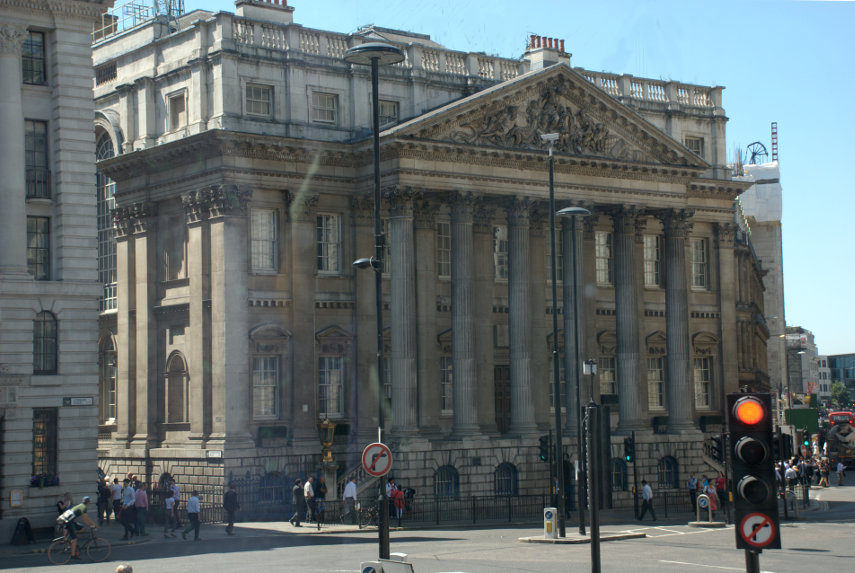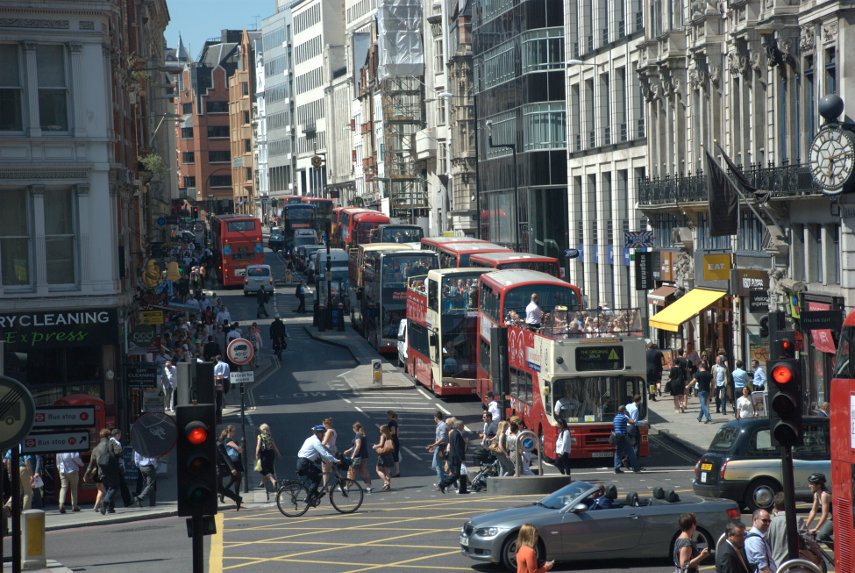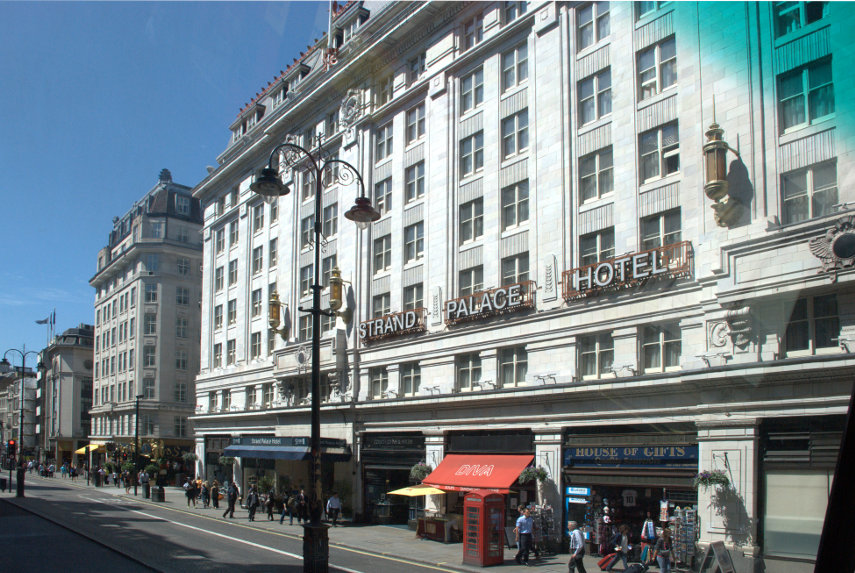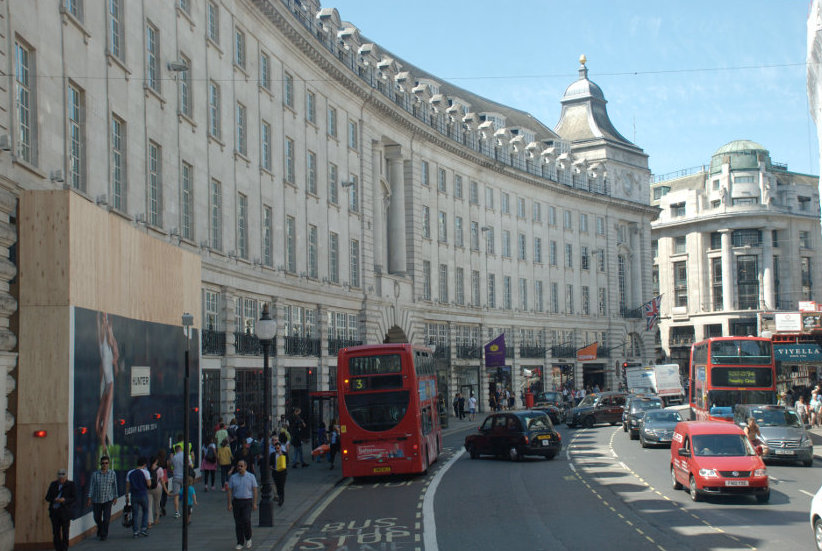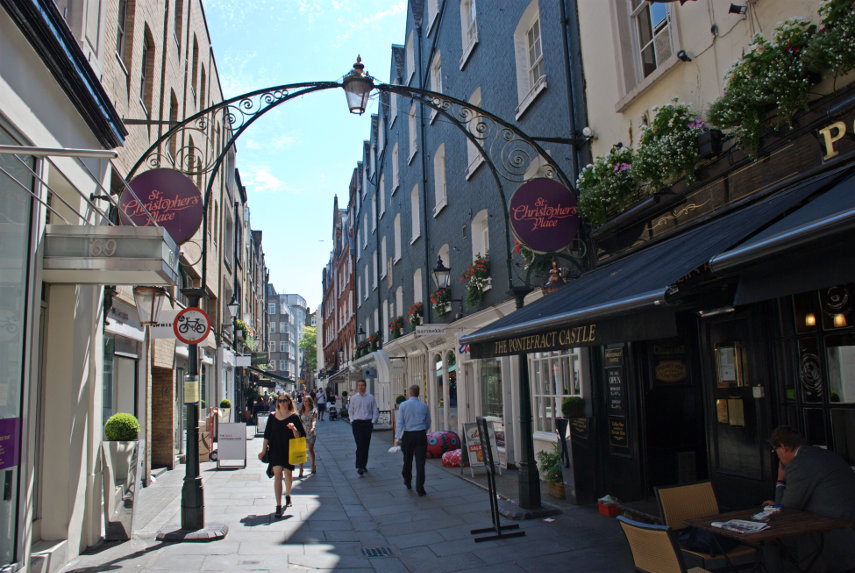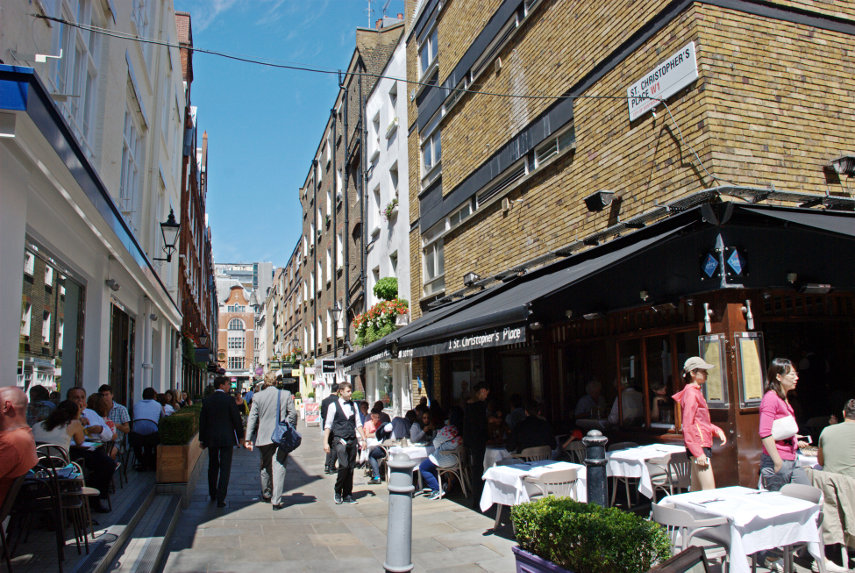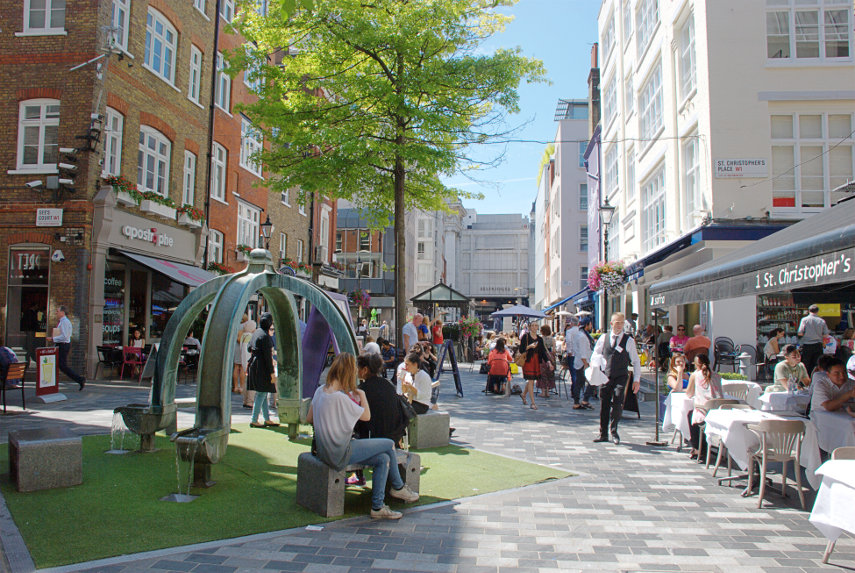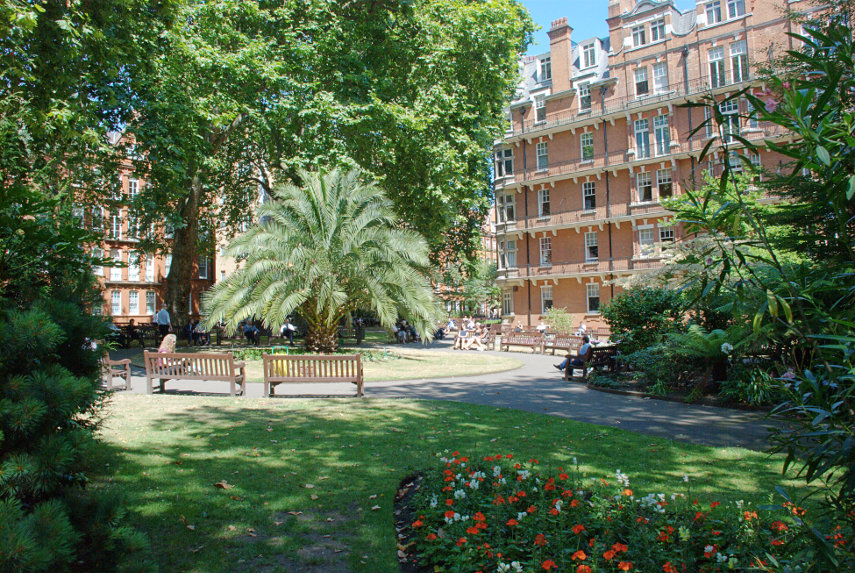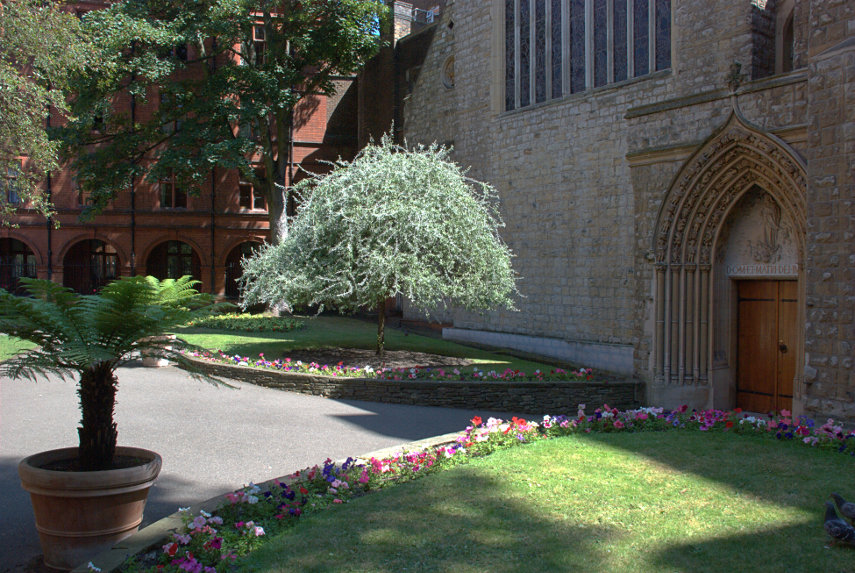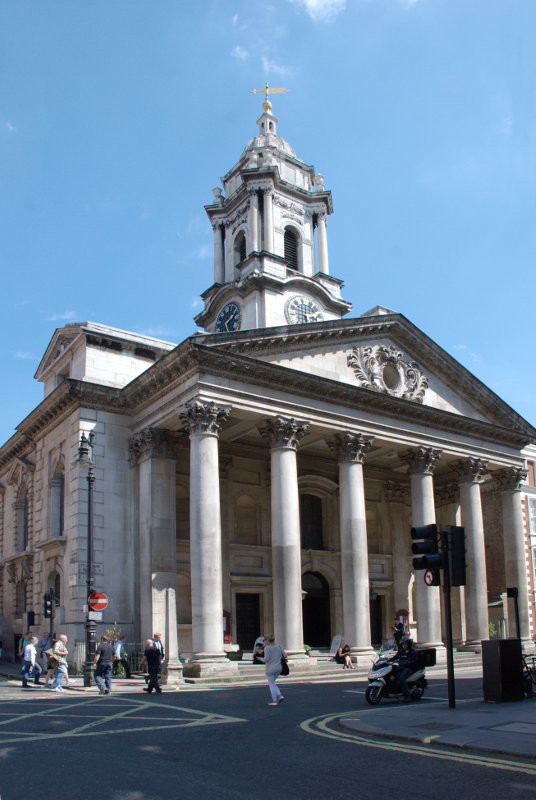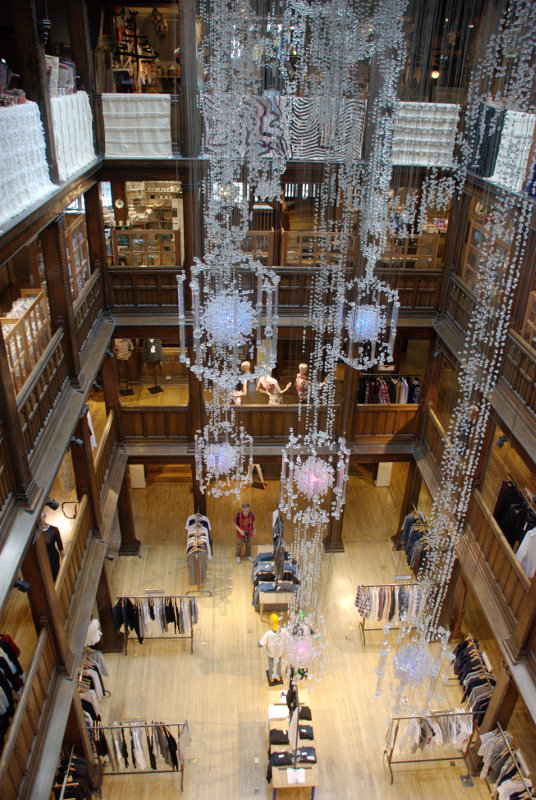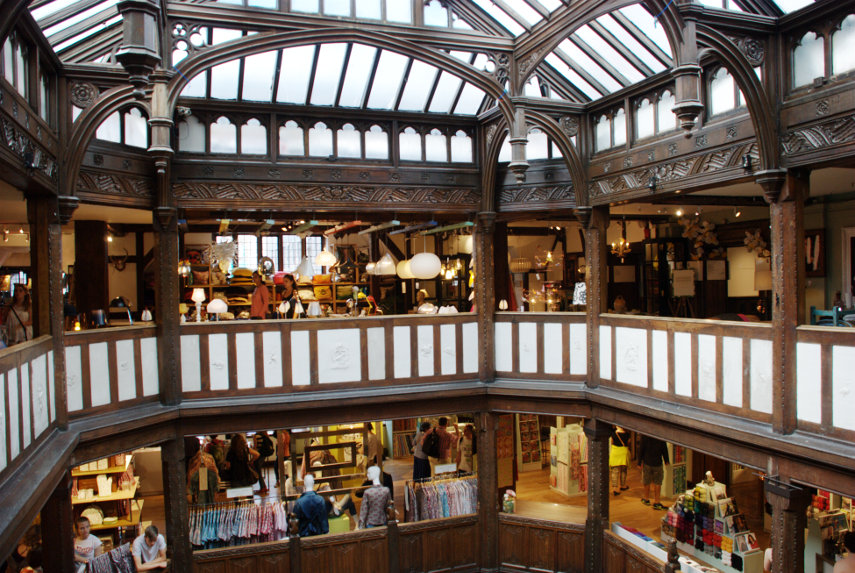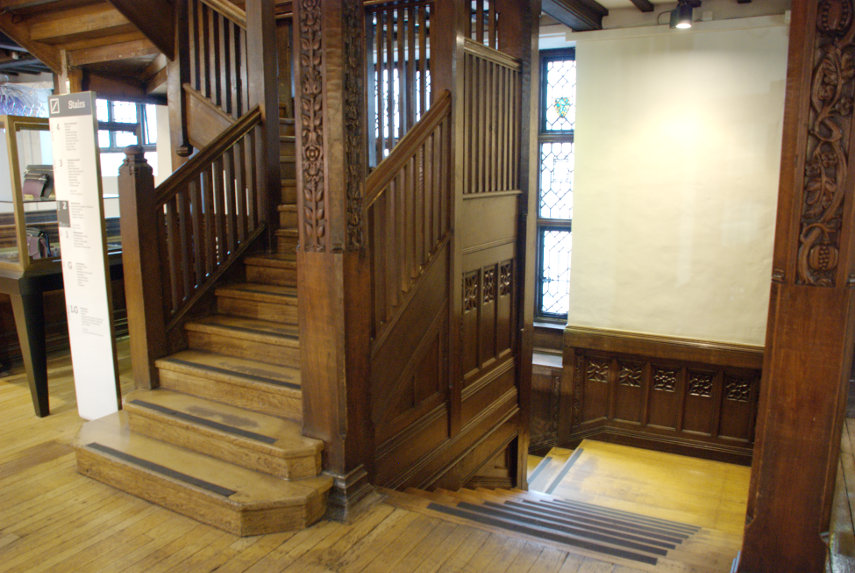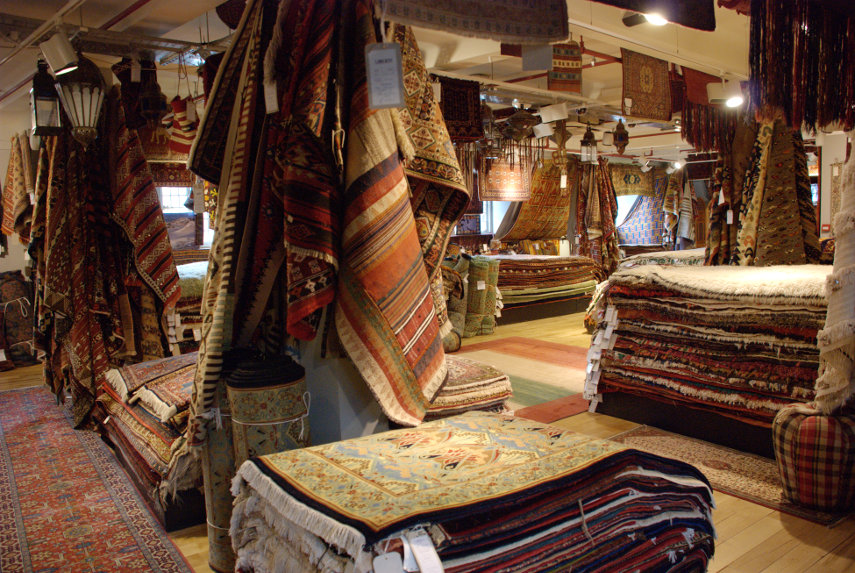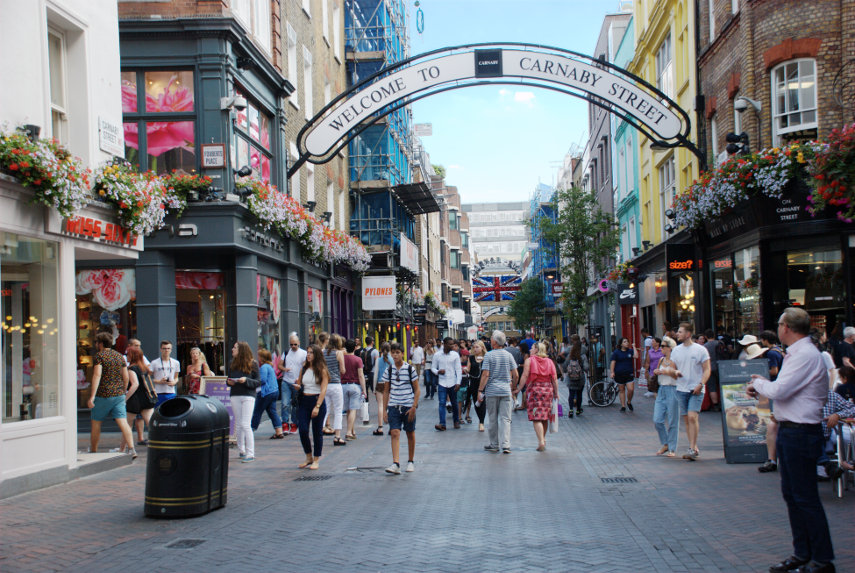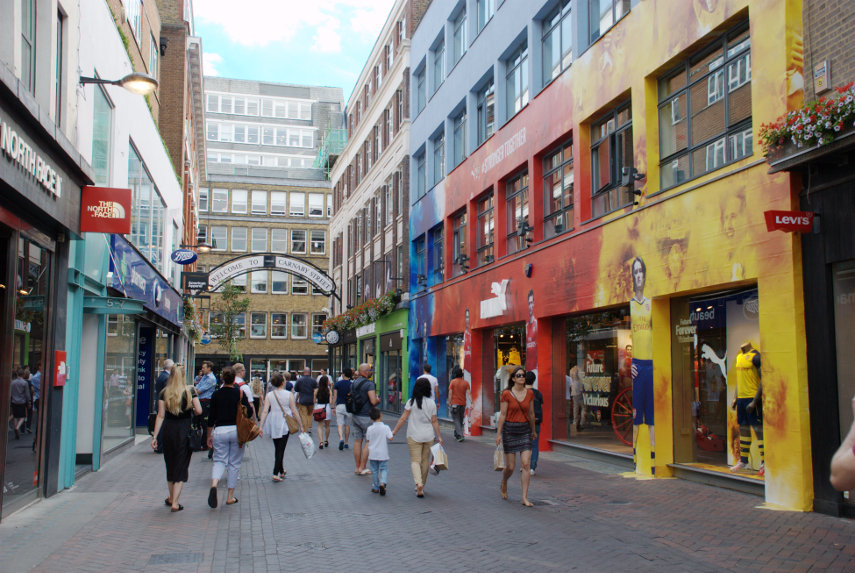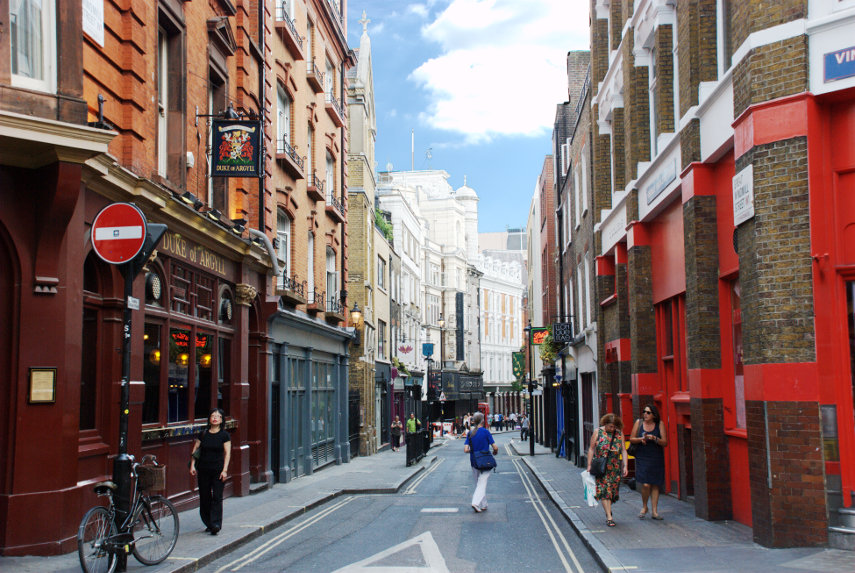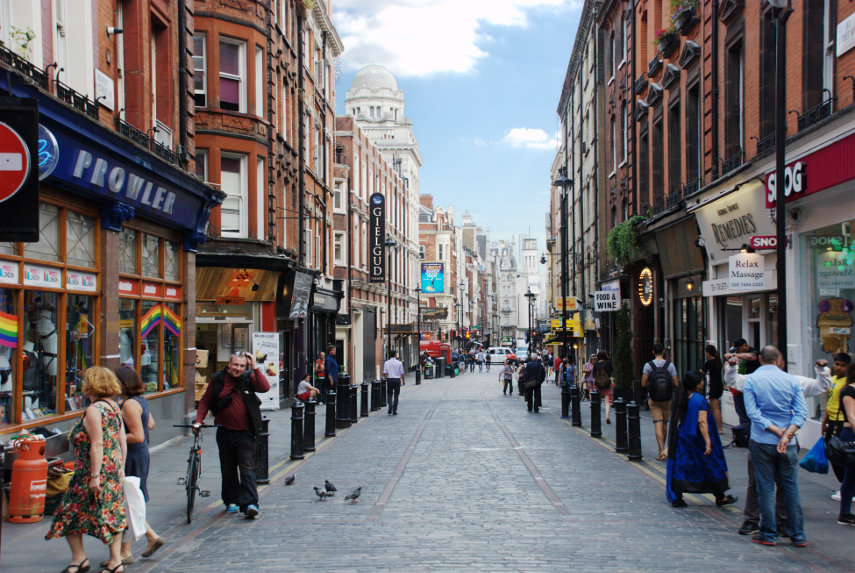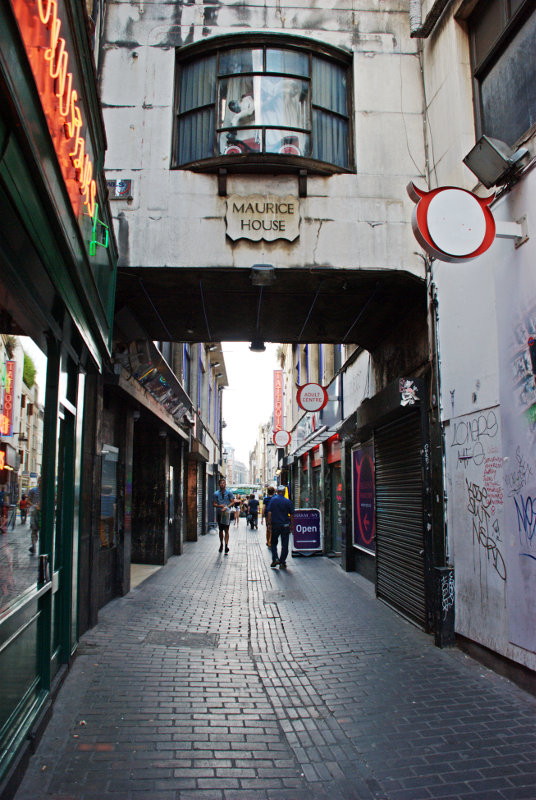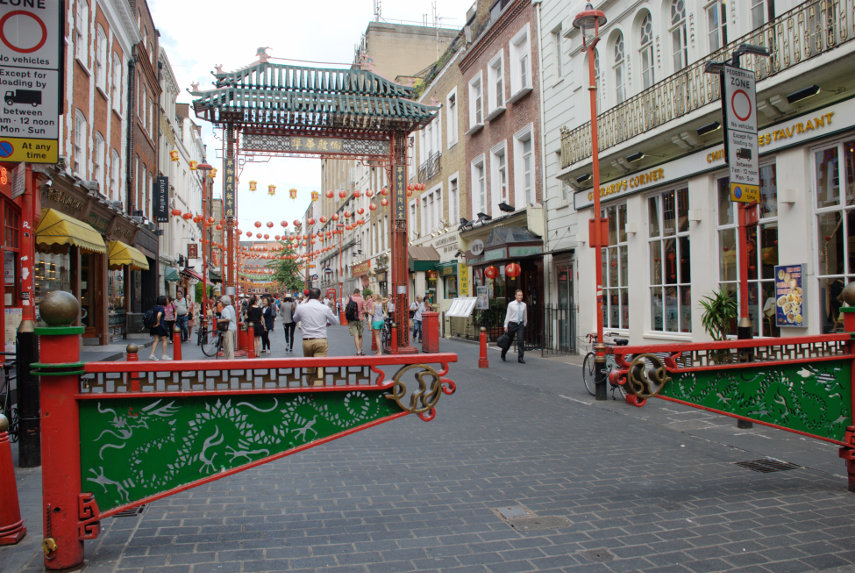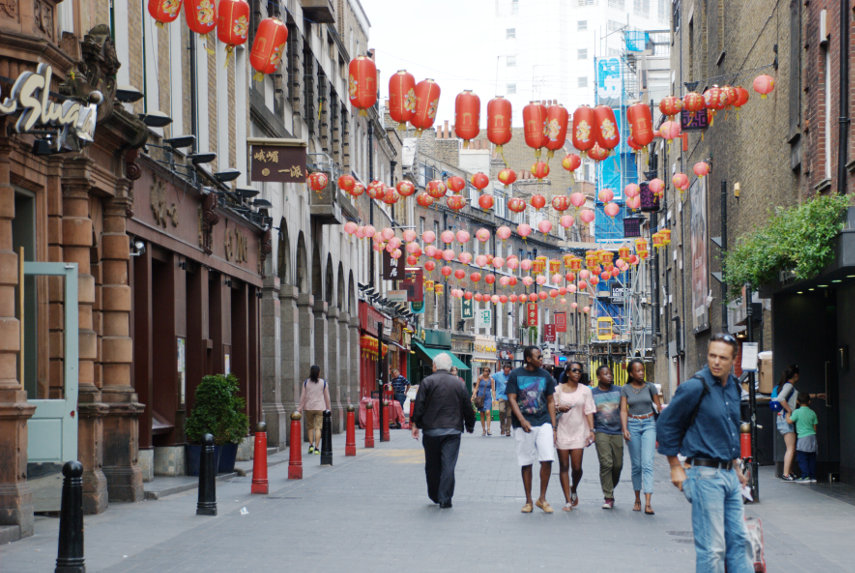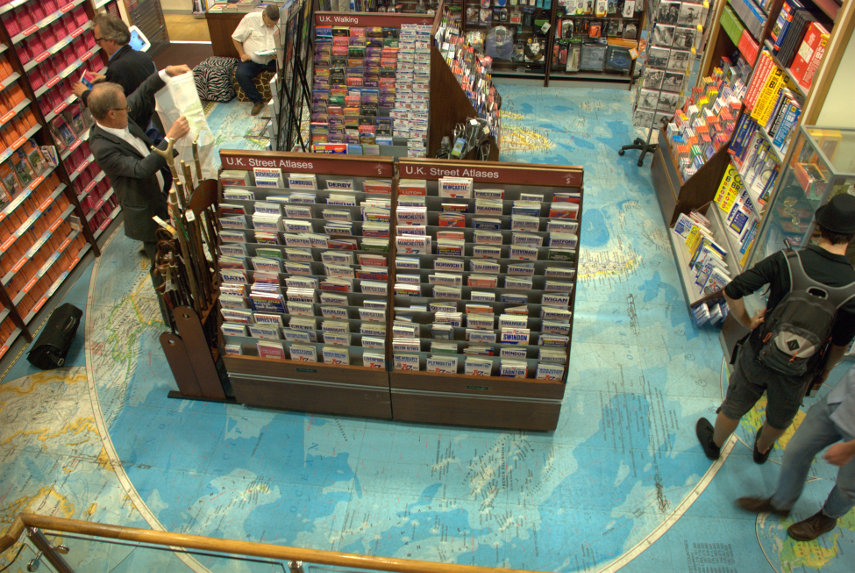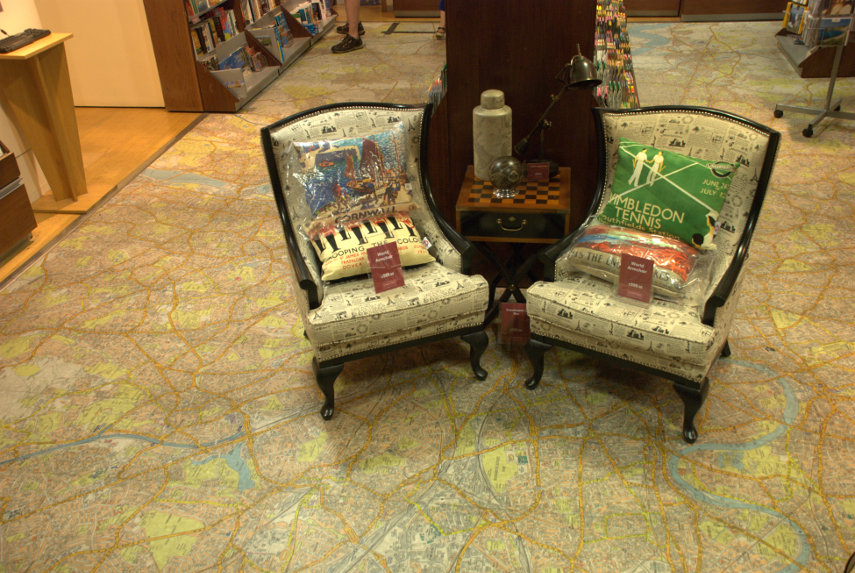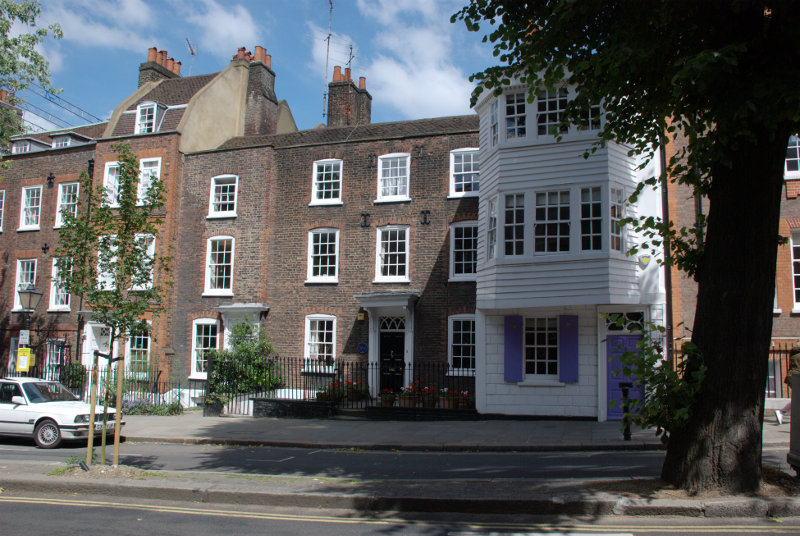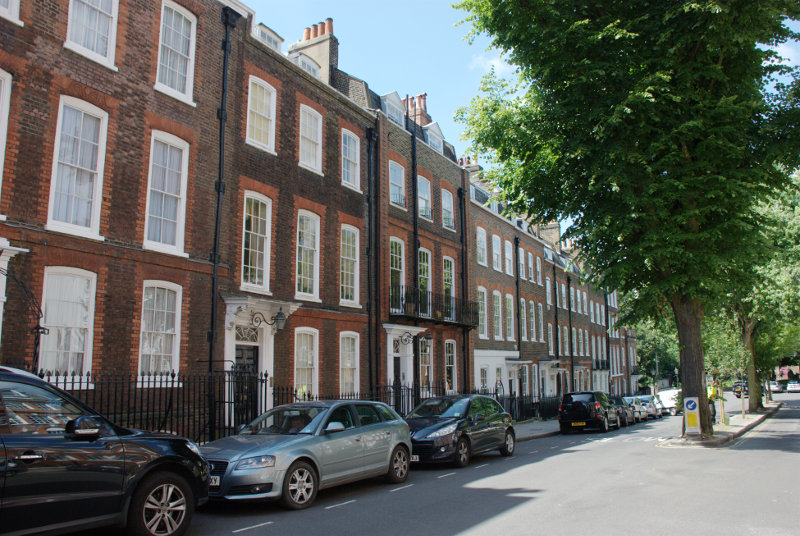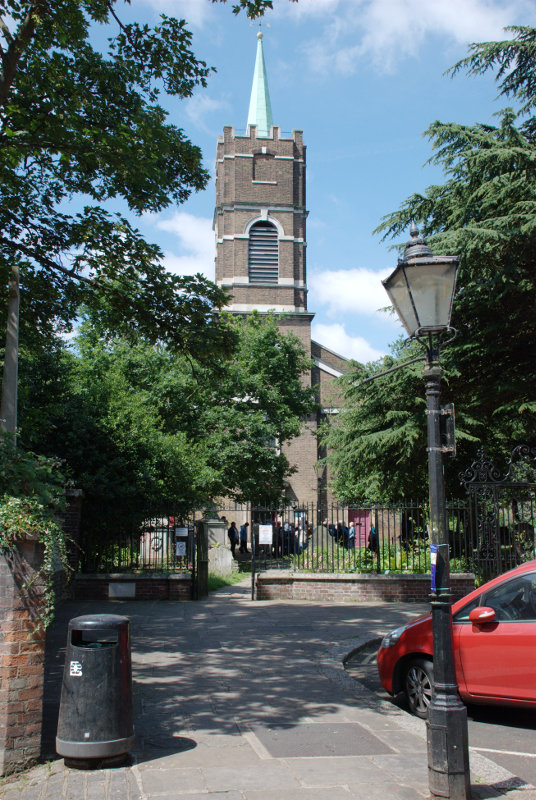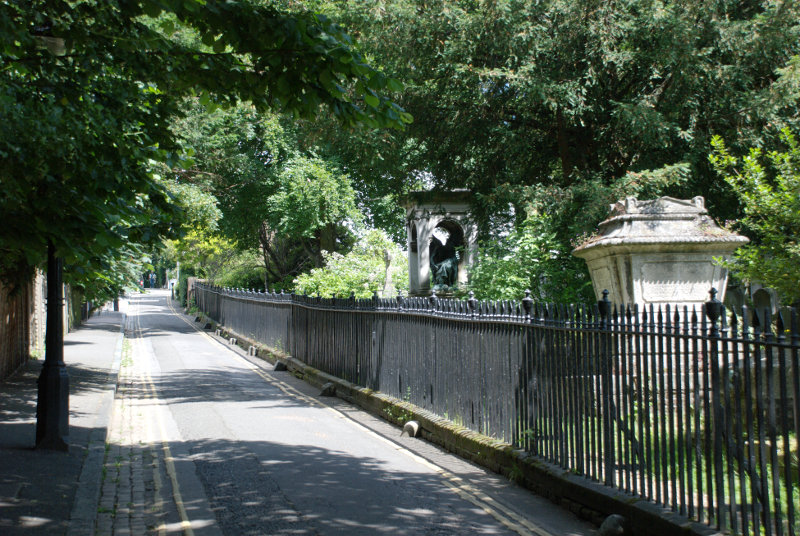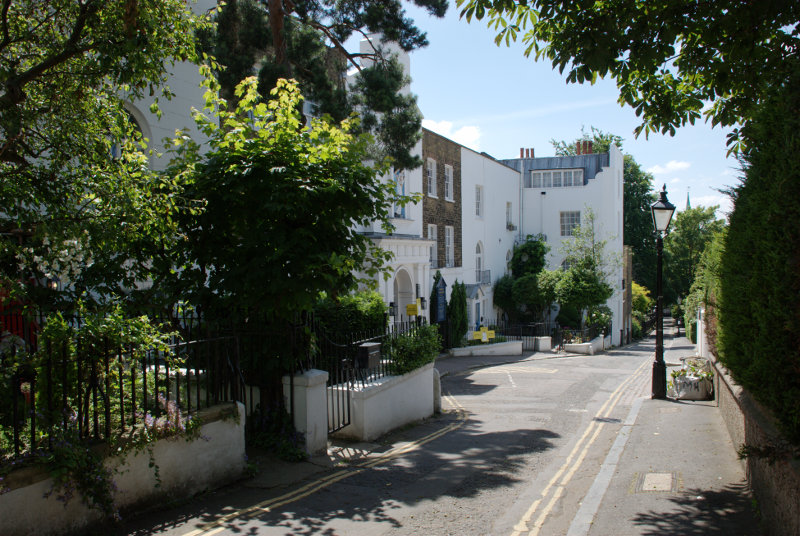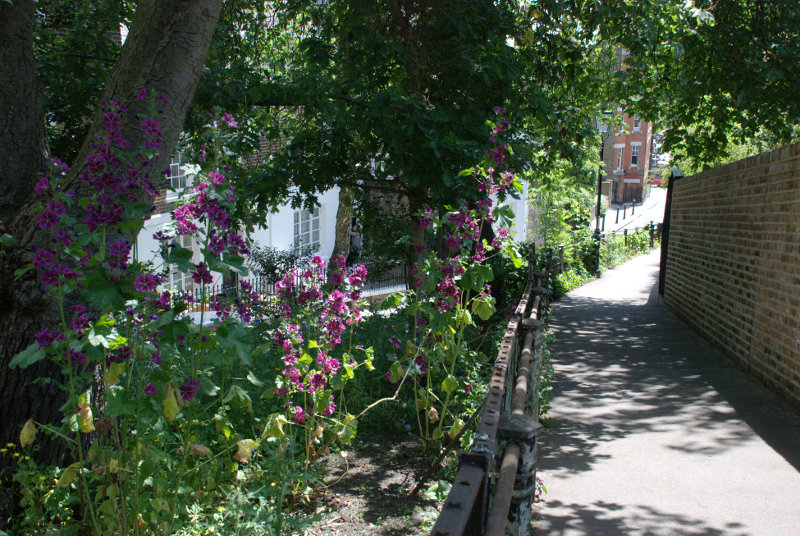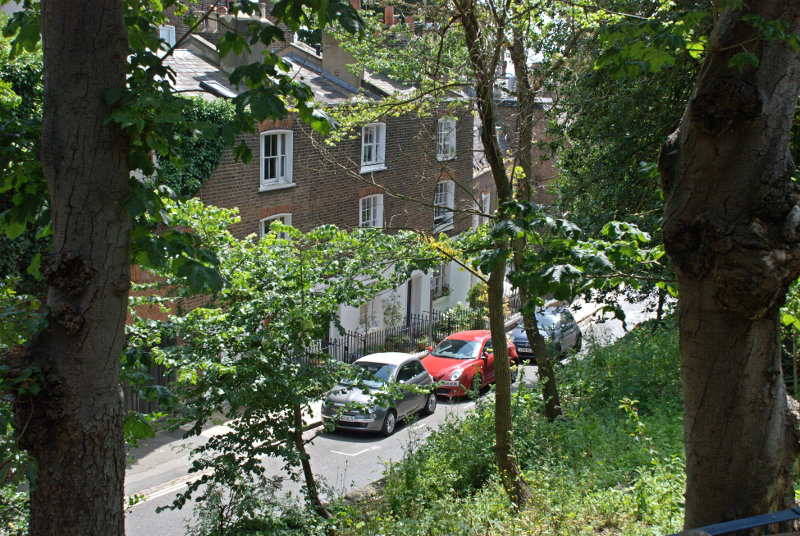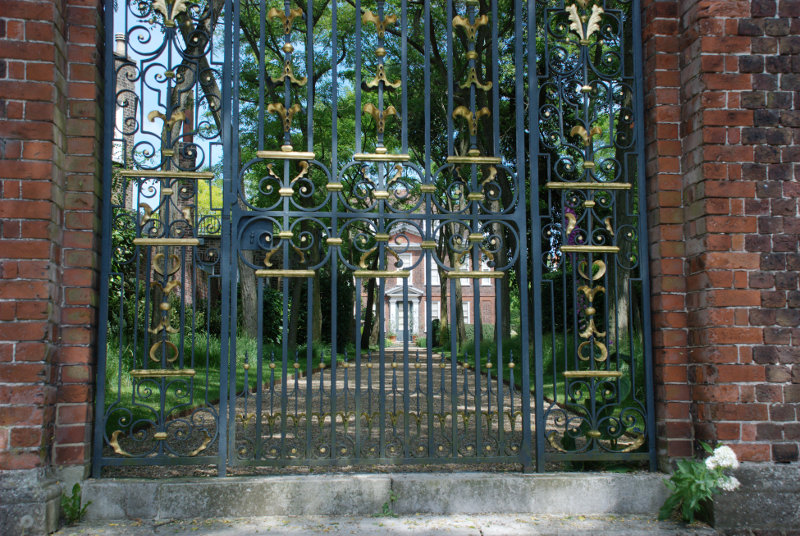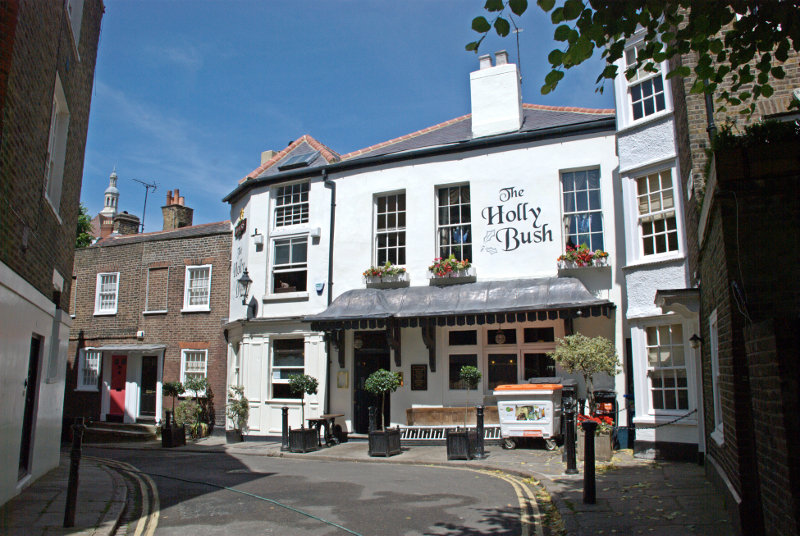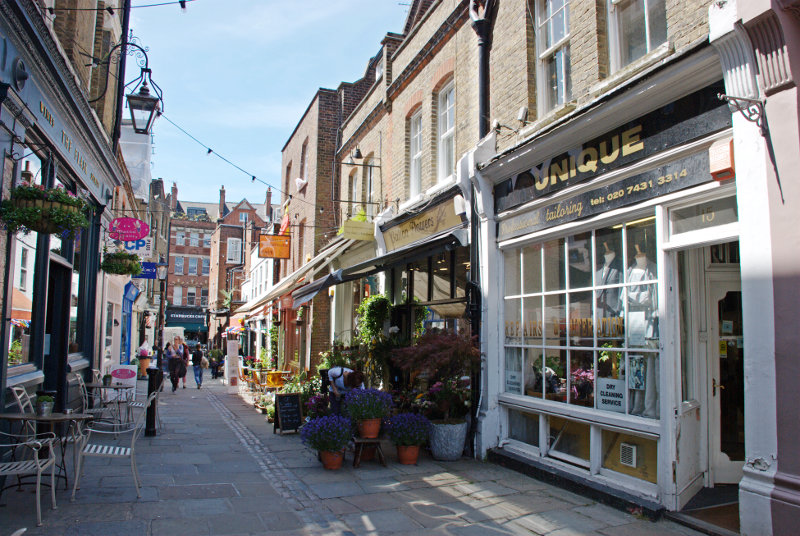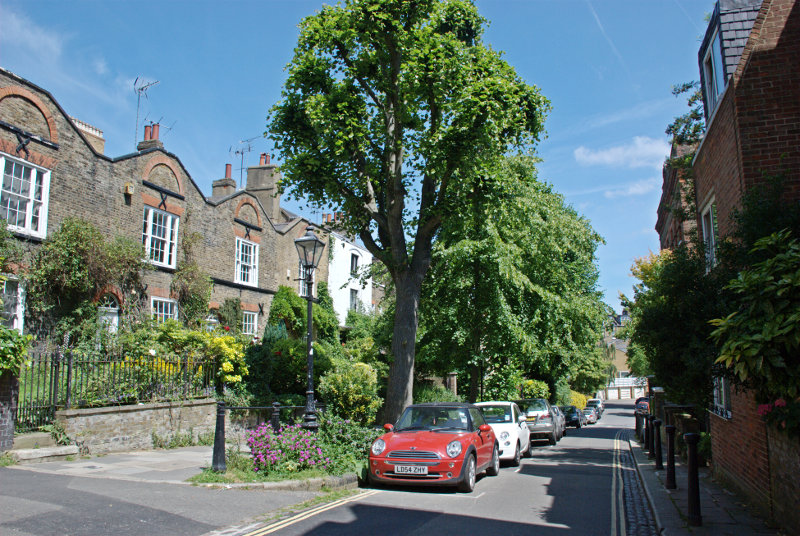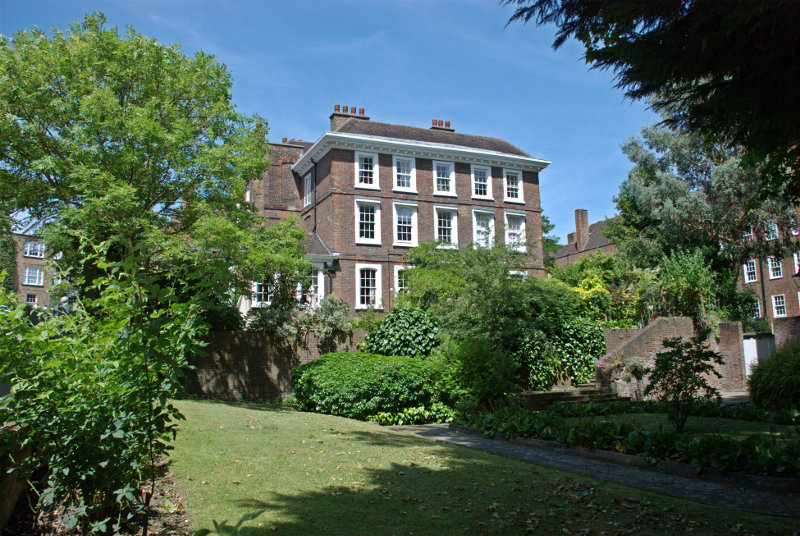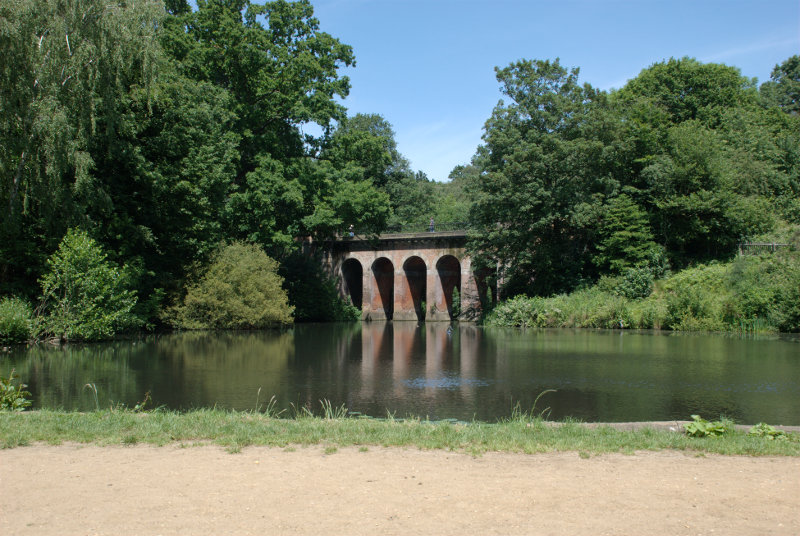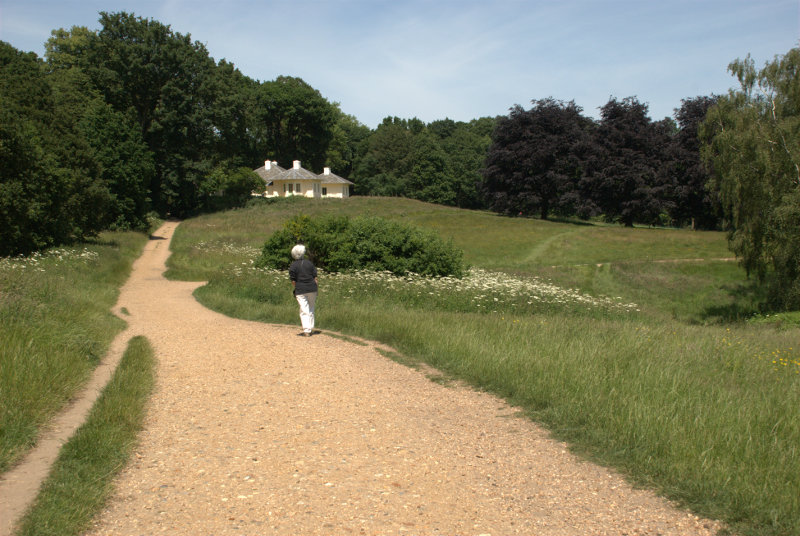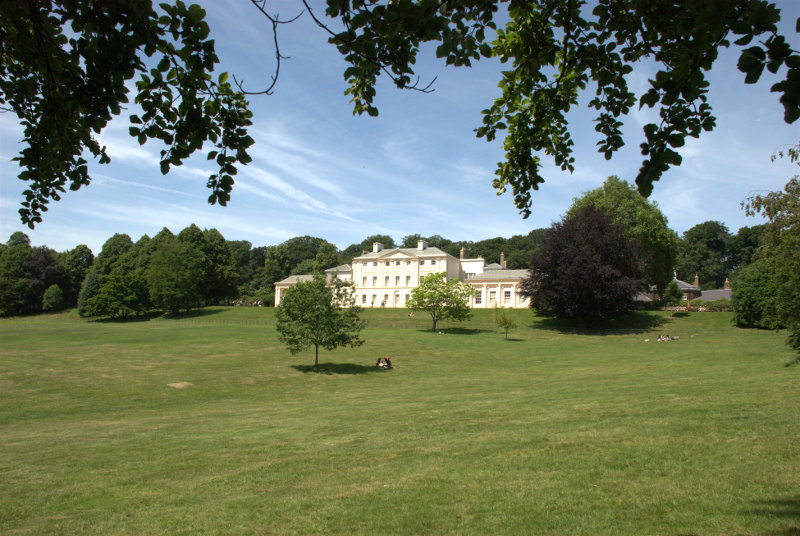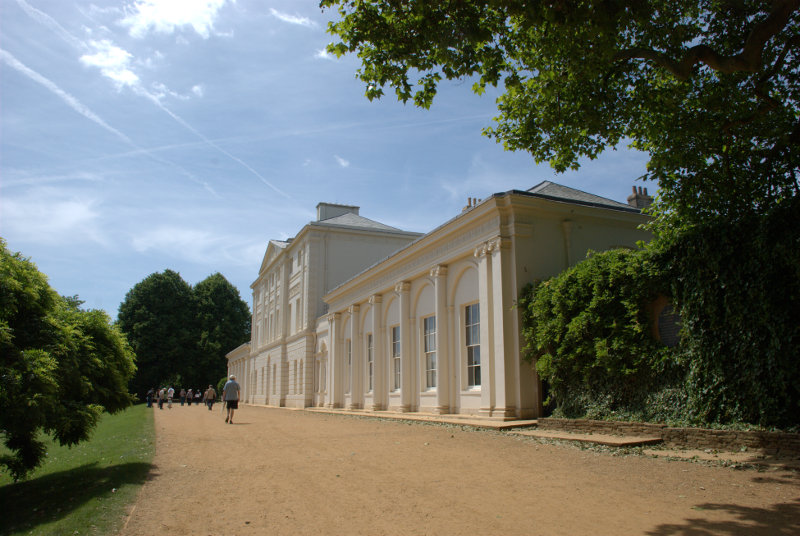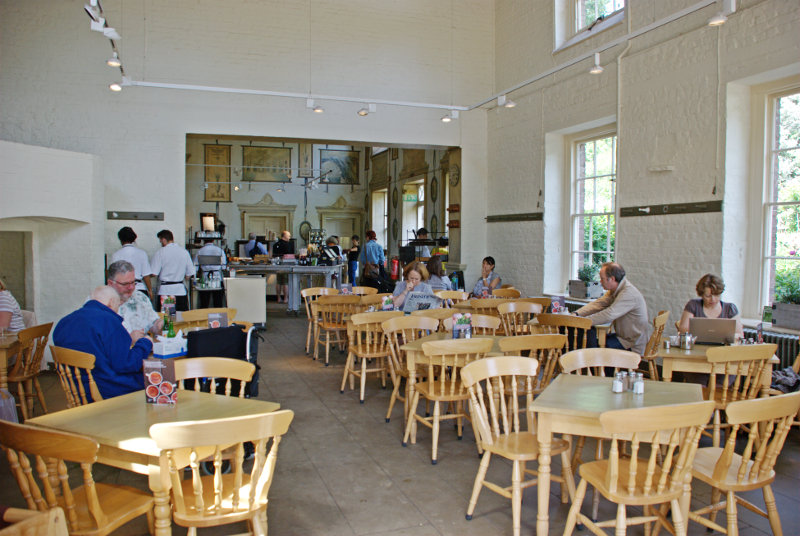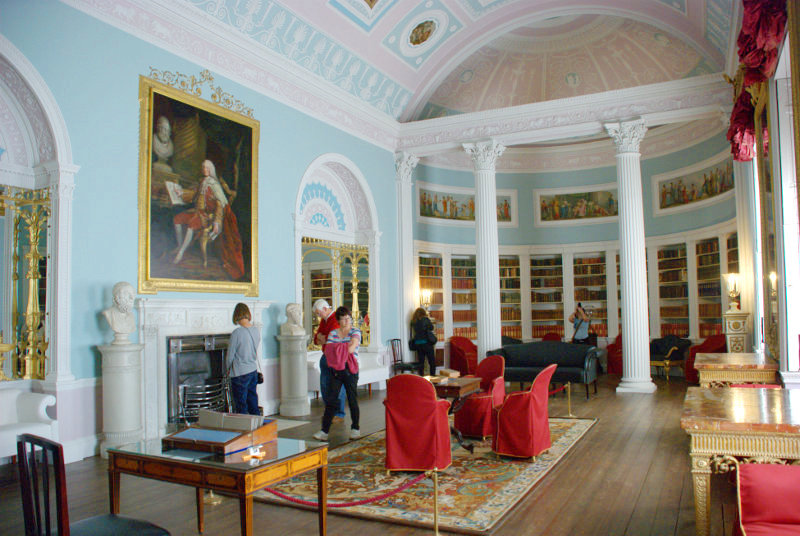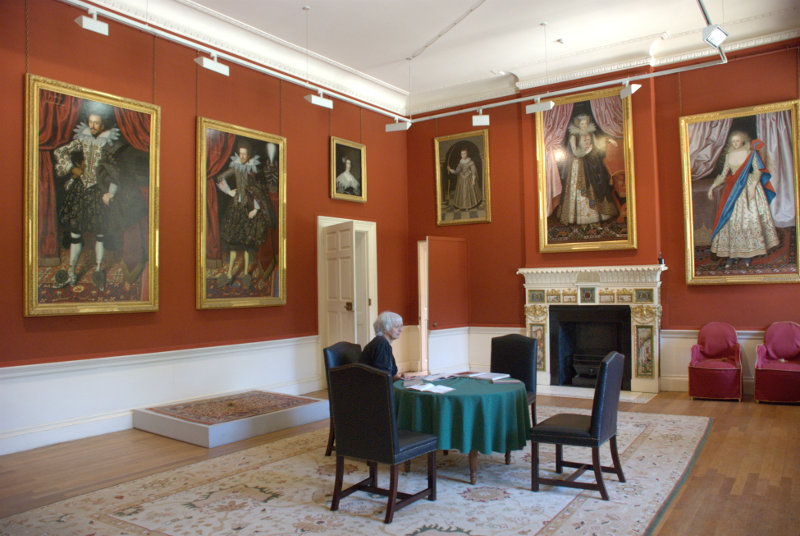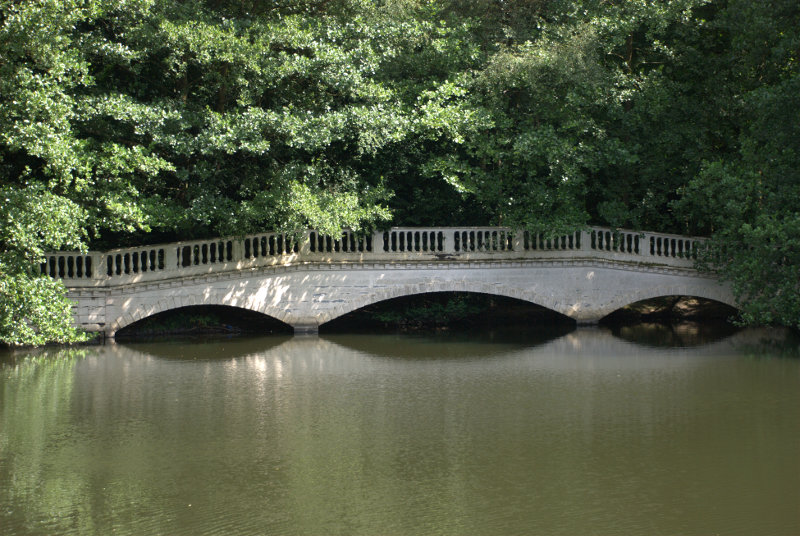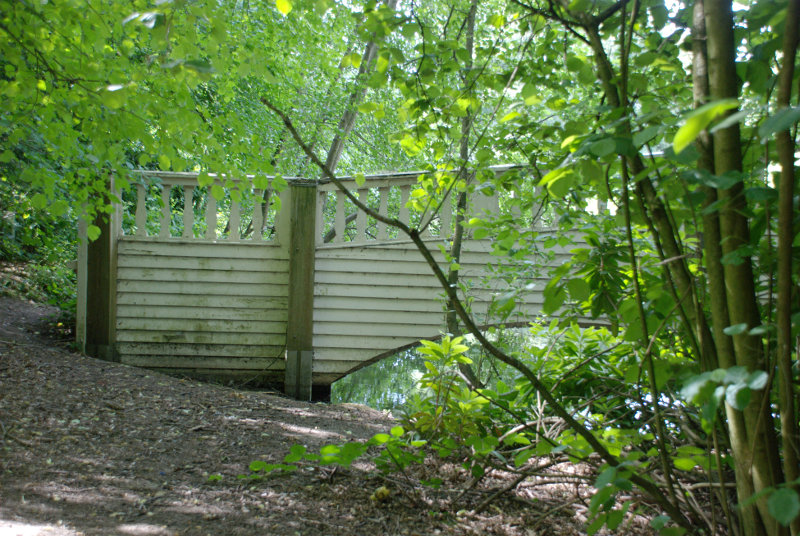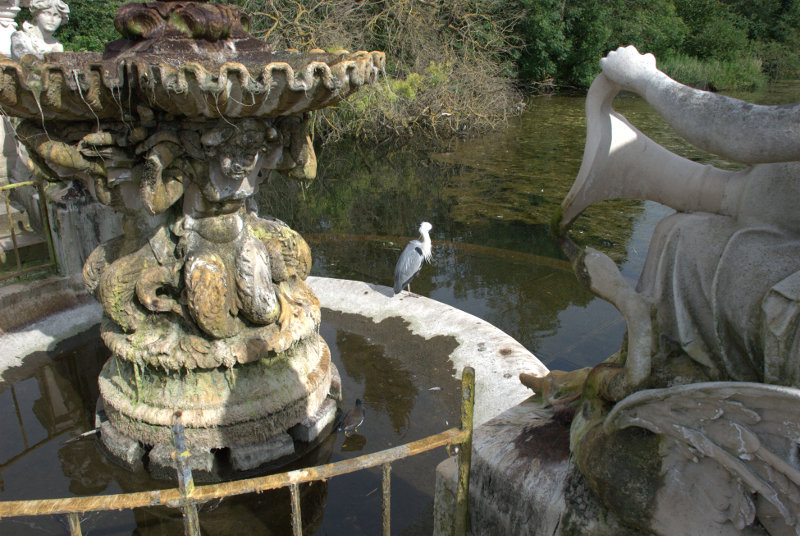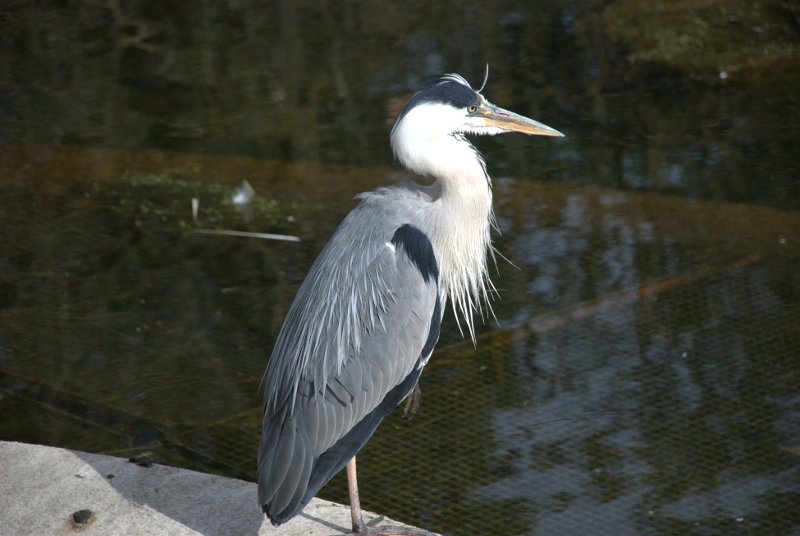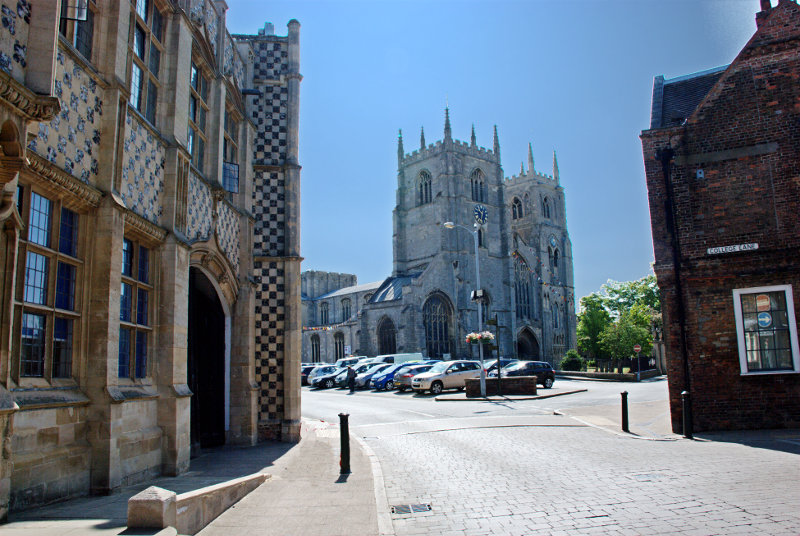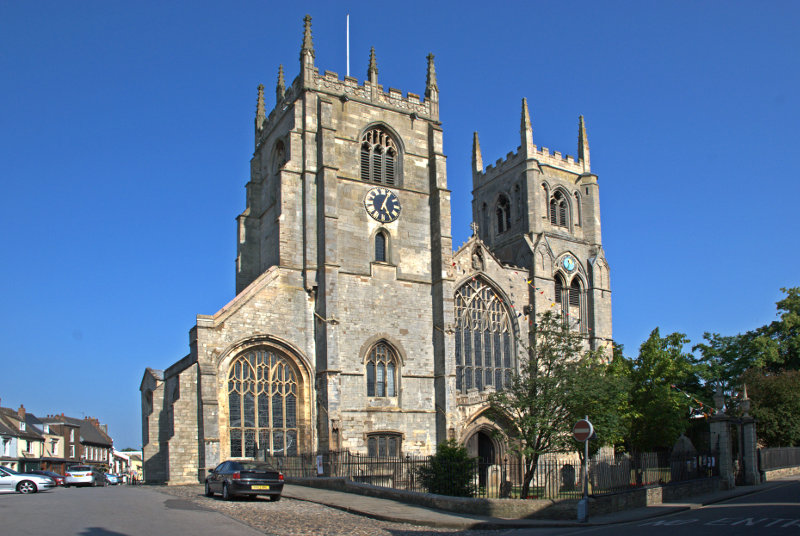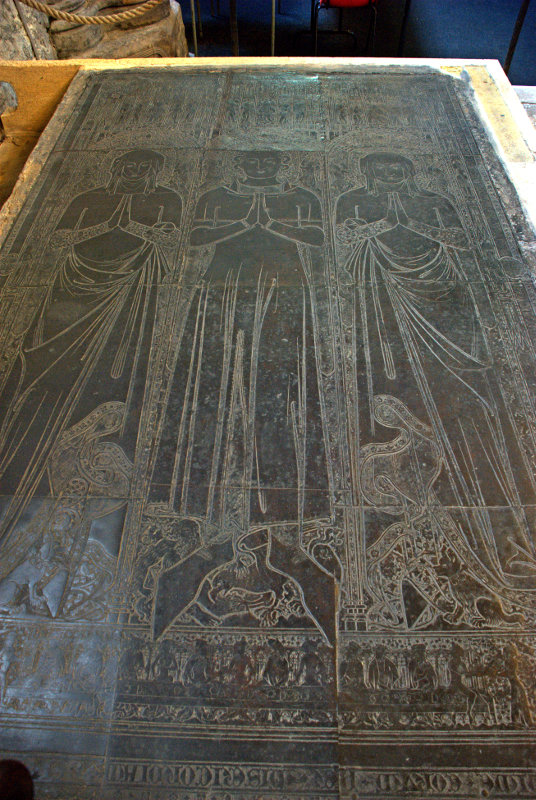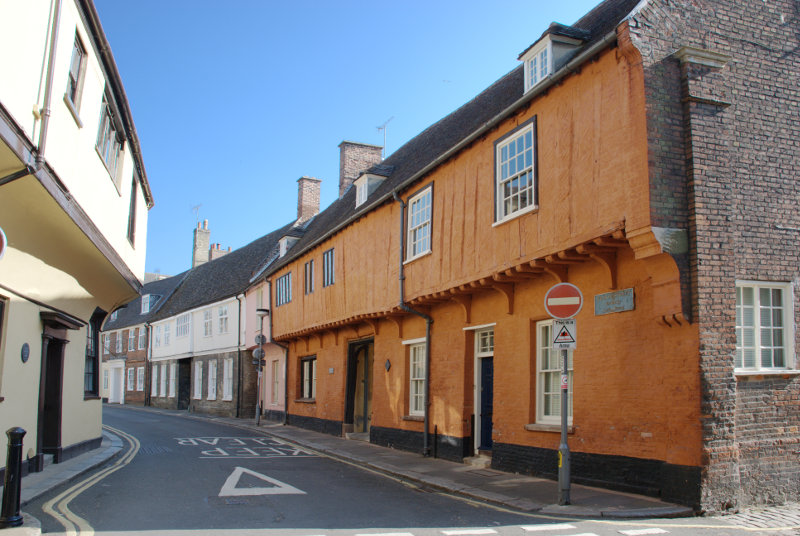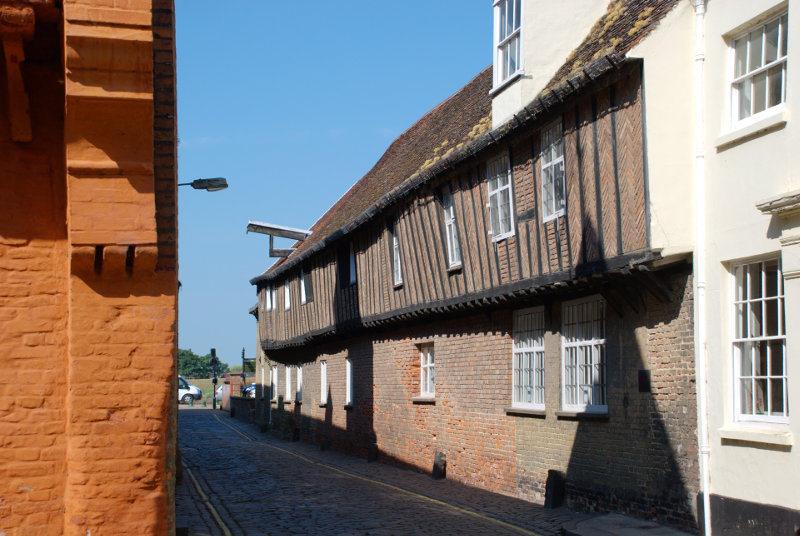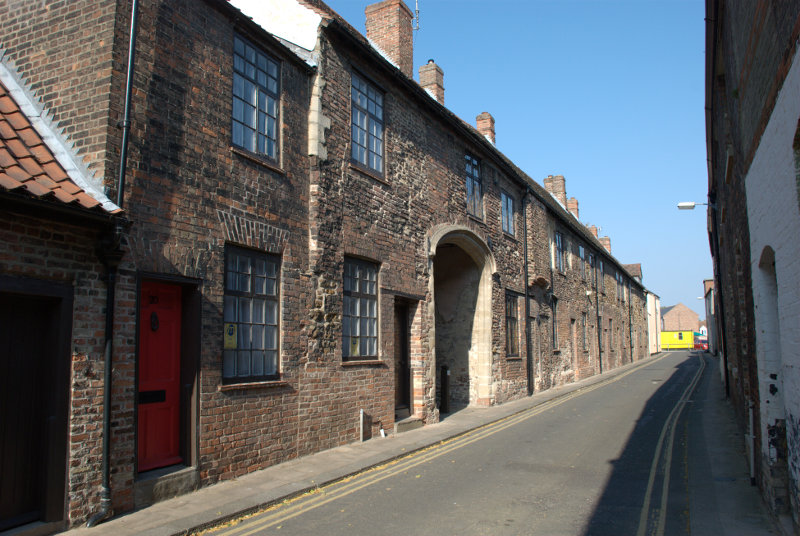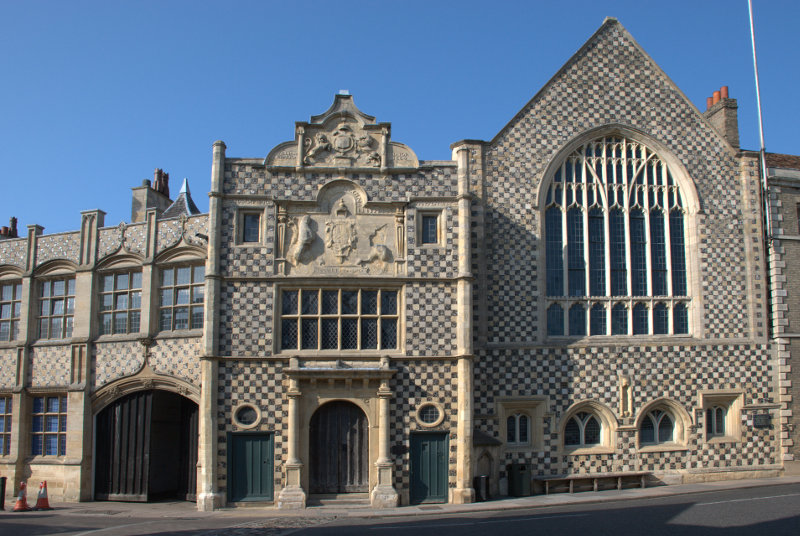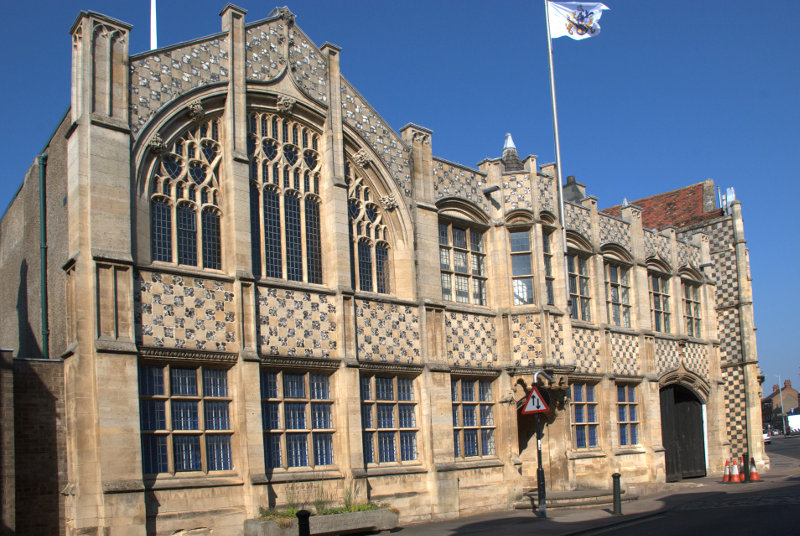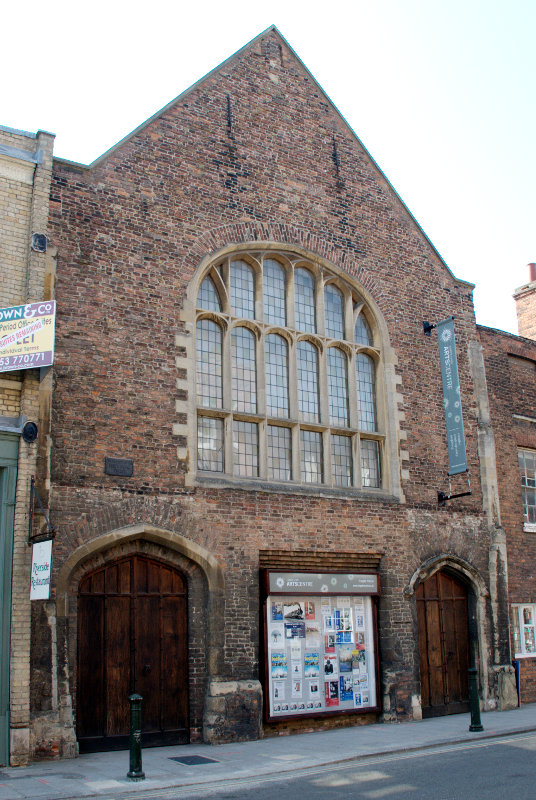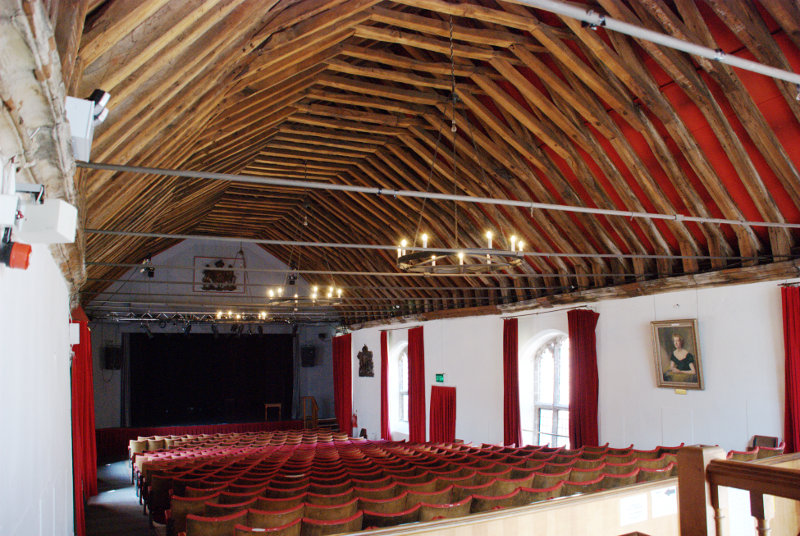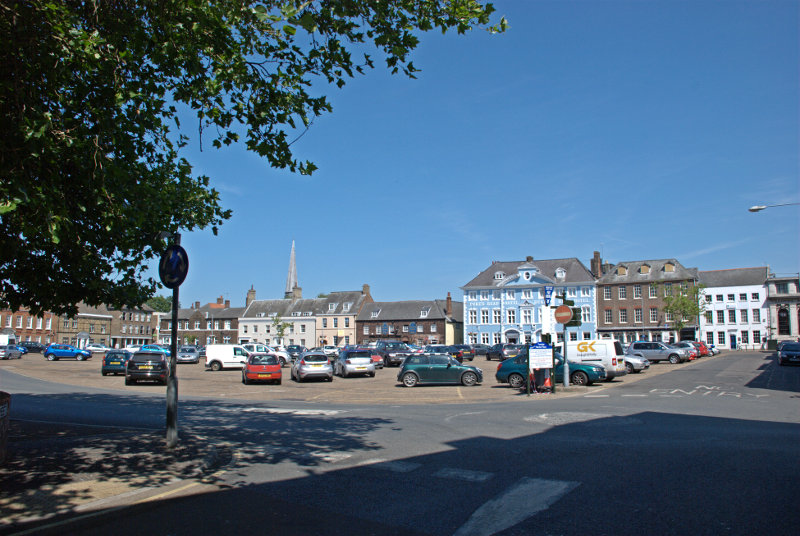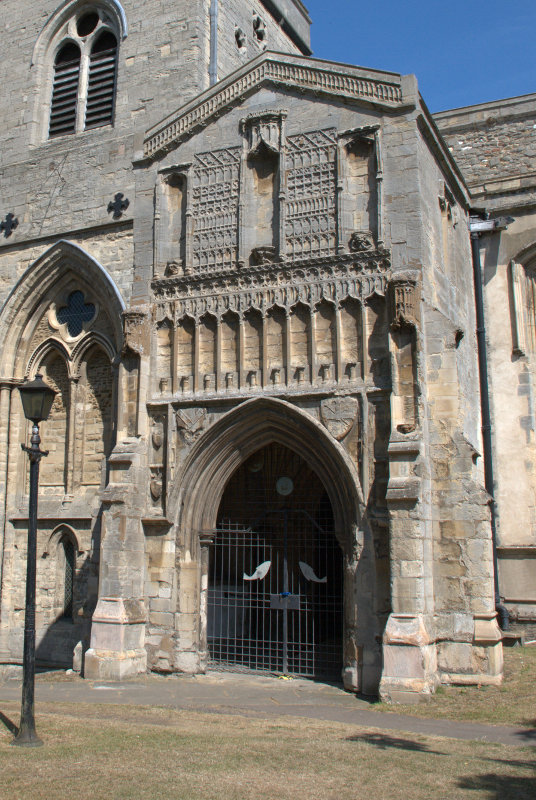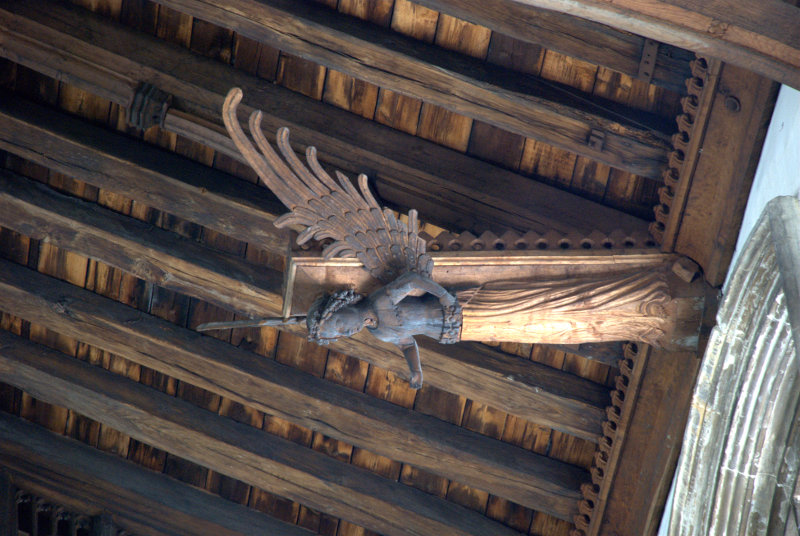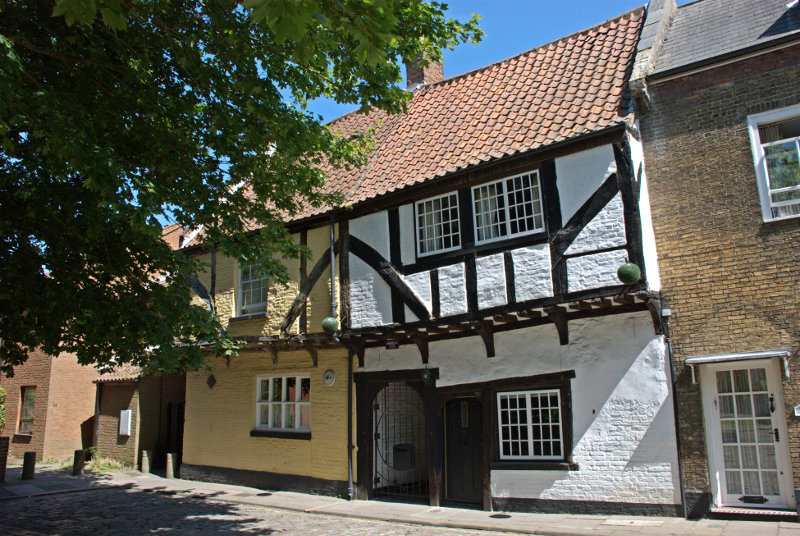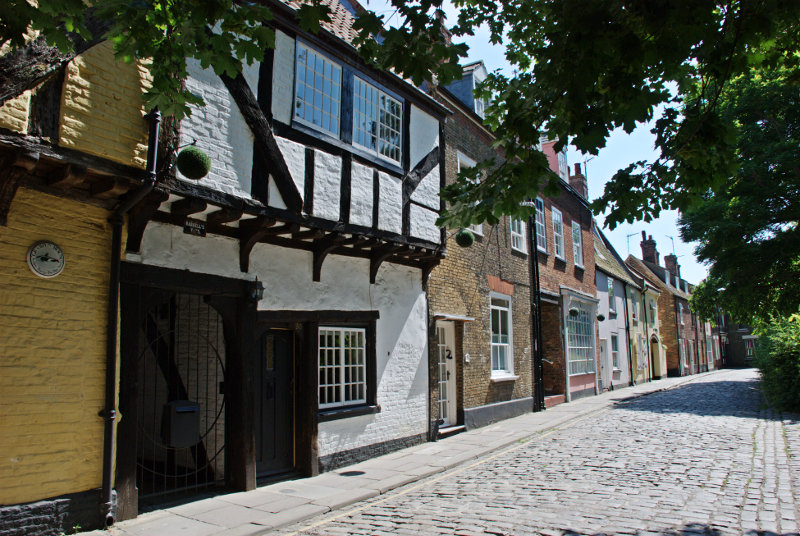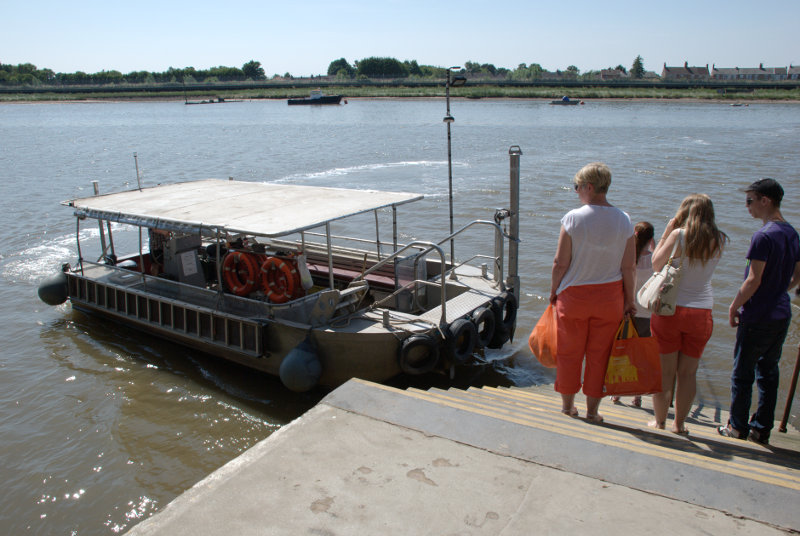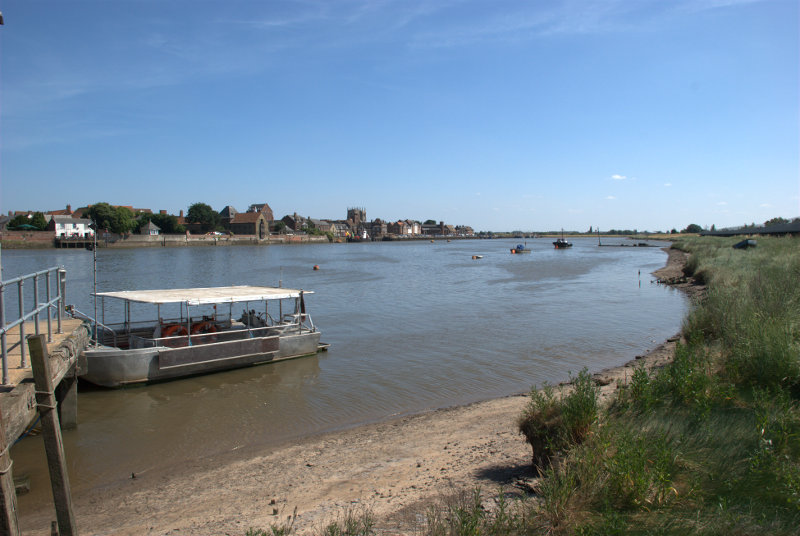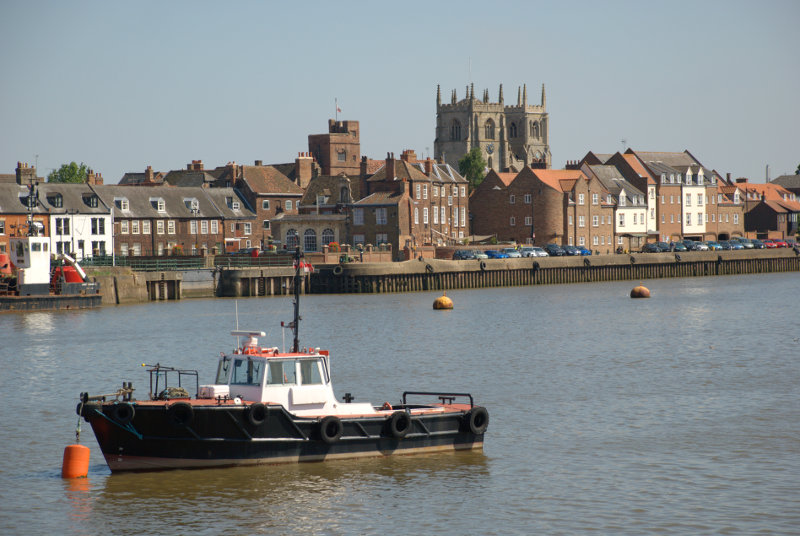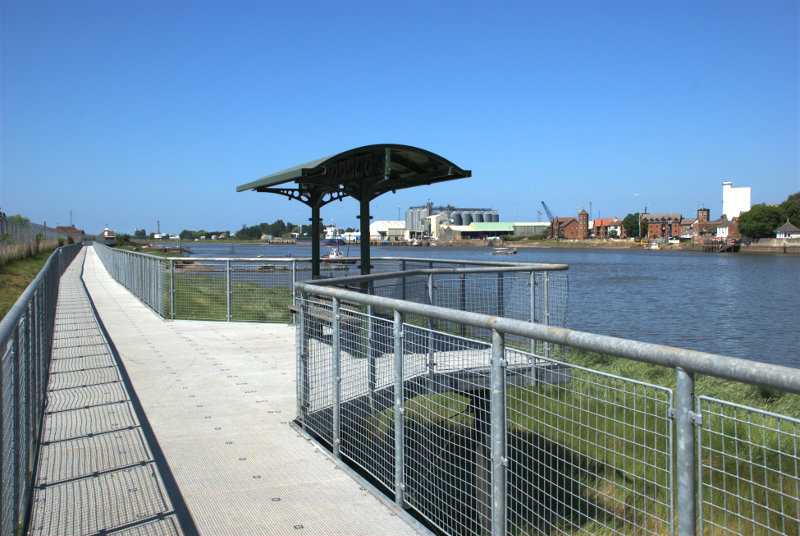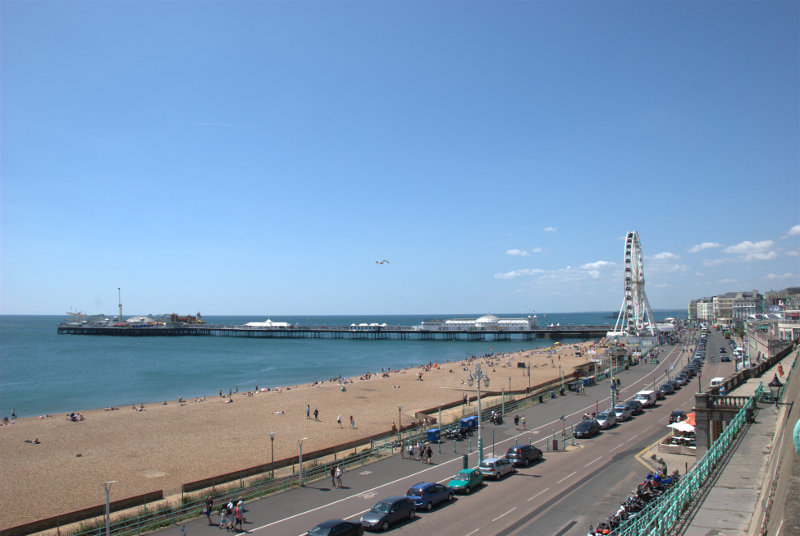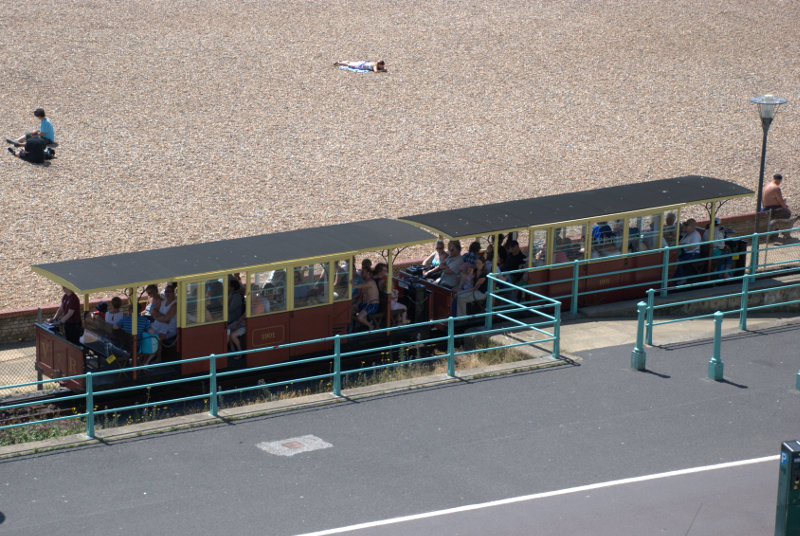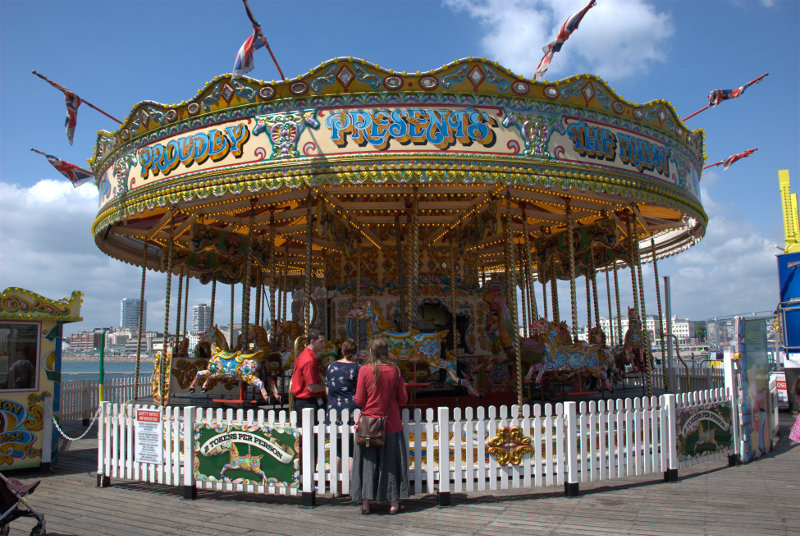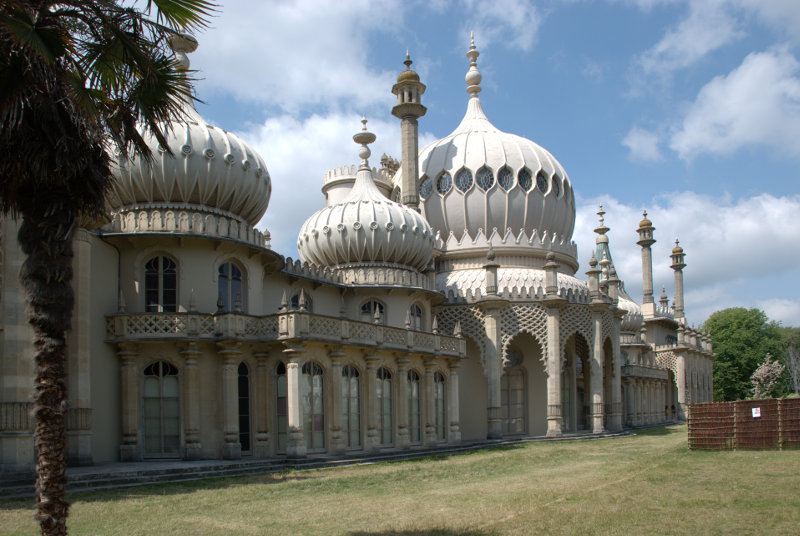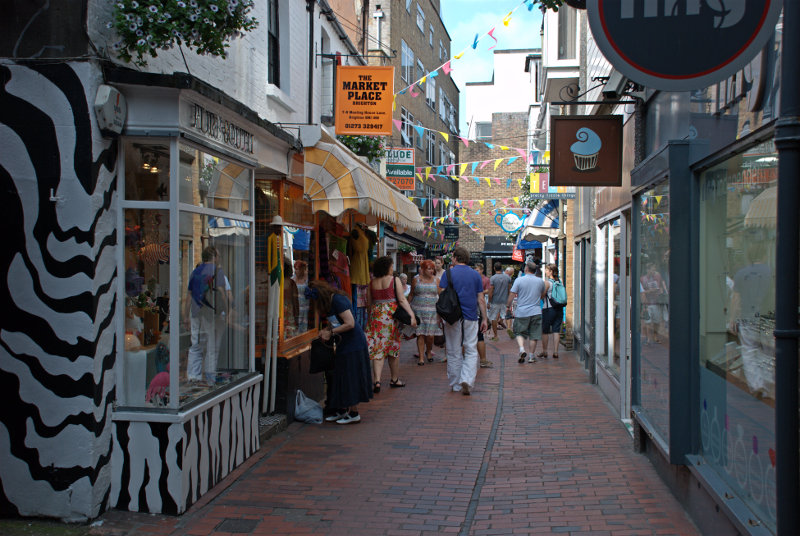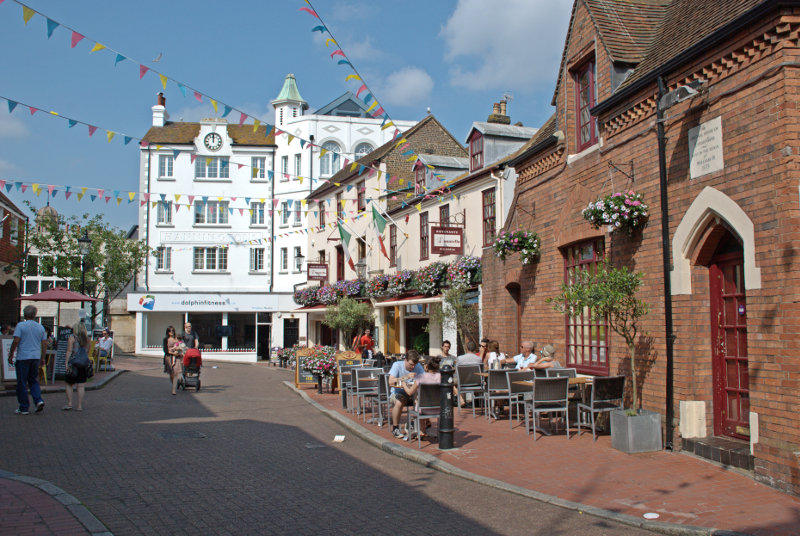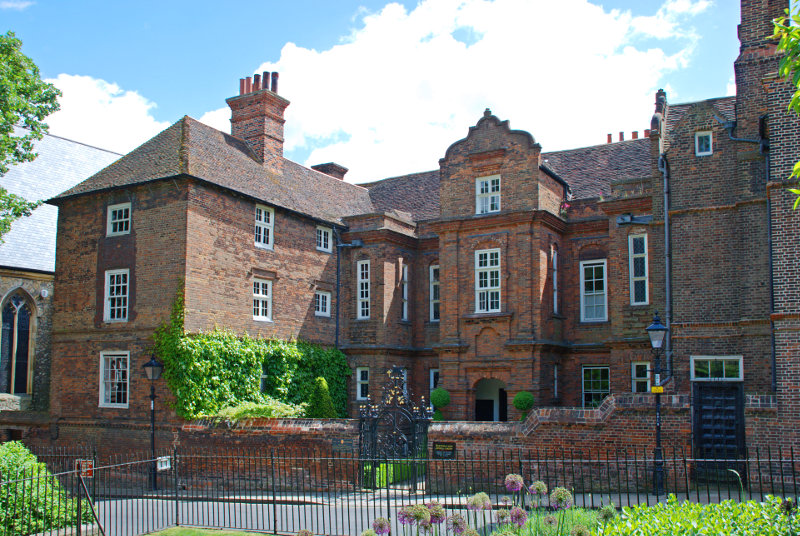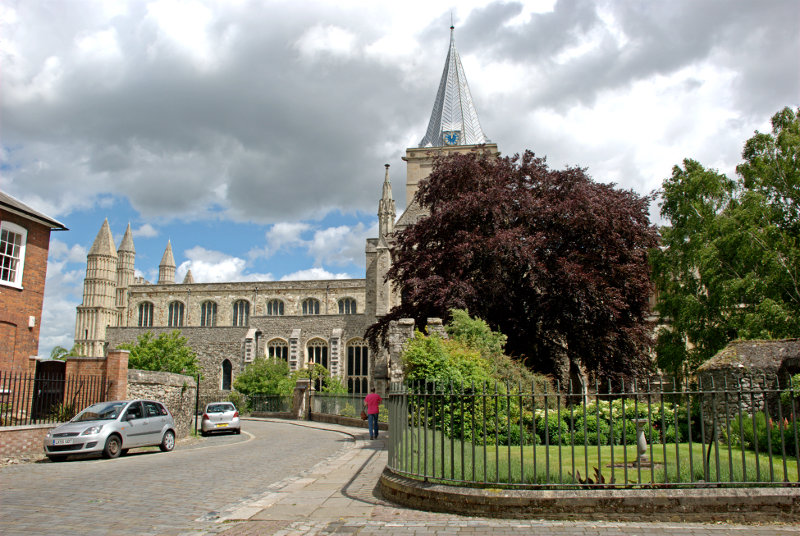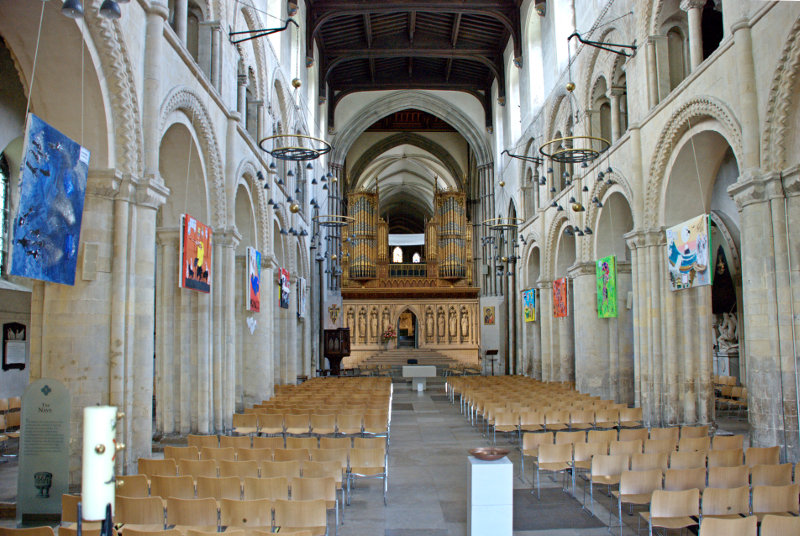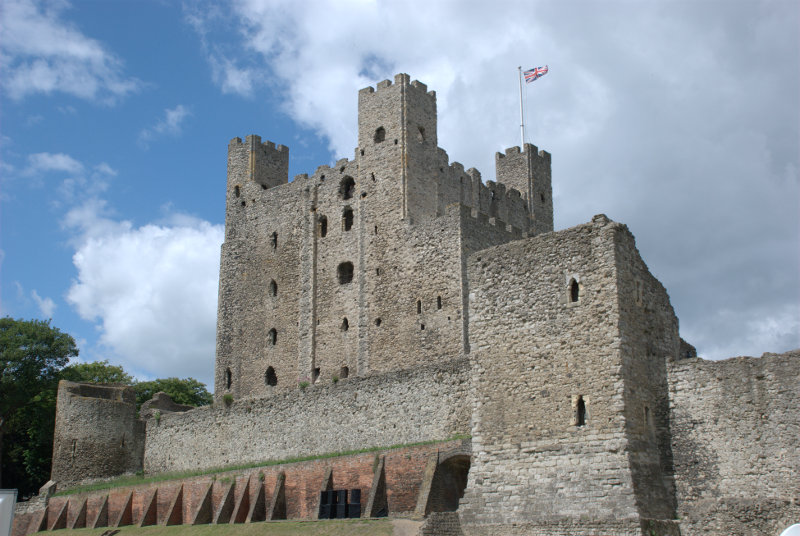Strand-ed
We caught the No. 11 bus at Liverpool Street Station heading west and had to wait a little while, when the bus encountered some heavy traffic, between the Bank of England and the Old Royal Exchange.
The hold-up wasn't for long and we alighted in the Strand, within sight of Nelson's Column, near Bedford Street.
We walked west a very short distance until we could walk through a gap into William IV Street, right into Chandos Street and then to the next left junction.
This is our first 'target'. No, not The Marquis of Granby pub but the little alley behind it – Brydges Place. This is said to be the narrowest alley in London although not for its whole length. The end we were about to enter was narrow but not exceptionally so.
The Marquis pub was known to Charles Dickens when he worked nearby and he remembered the name in Pickwick Papers and transferred it in the story to the pub owned by Sam Weller's father. The pub was originally called the Hole in the Wall and dates from the 17th century
However, as we progressed past the rear wall of The Marquis pub the far end did begin to look a little tight
then even tighter
and finally it was pretty narrow even for a slim person like Amanda (I have to say that otherwise she will ask for her £10 back ![]() ) but we did manage to pop out the far end into St. Martin's Lane.
) but we did manage to pop out the far end into St. Martin's Lane.
We turned right (north) and walked up St. Martin's Lane until we reached the Coliseum Theatre where we found Mays Court on the far side. The wall on the right is, as you may notice, the side wall of the Coliseum.
When it was built in 1904 it was the largest theatre in London and the first to have a revolving stage.
We walked through Mays Court back into Bedfordbury and turned left (north) as far as Goodwin's Court. The entrance next to the small shoe repair shop could be easily missed.
I have been to Goodwin's Court before when I came up here on my own but Amanda hadn't seen it. This is a complete row of houses built in 1690 with bow windows through which can be seen small rooms with steep staircases which have remained unchanged for over 300 years.
We walked back the way we came into Bedfordbury and walked south past the Lemon Tree:
The name dates from the 17th century when oranges and lemons were regarded as a luxury and as a treat to be sold in theatres by people like Nell Gwynne.
We went back to the bottom of Bedfordbury and thence to the corner of Trafalfar Square by St. Martin's in the Fields. We decided to have some coffee in the crypt where one sits over tombs in the floor which some people seem to find a bit creepy but I have to say it doesn't affect us at all. However, we may have had grave expressions on our faces whilst drinking. ![]()
We finished our coffee and made our way to the south edge of Trafalgar Square where it's joined by The Mall which passes through the Admiralty Arch.
The Queen lives at the other end of the Mall and we considered walking down to give her the opportunity of asking us to lunch but eventually decided that it was too long a walk. Yes, I know she'll be disappointed but we'll give her the opportunity some other time. Everything comes to him who waits; but in this case – 'her'.
We left Trafalgar Square via Northumberland Avenue and turned left into Northumberland Street to see the pub which is quite popular among Sherlock Holmes fans.
We walked down the alley, Craven Passage, at the side of the pub and on the right wall of the alley we saw this:
This is all that remains of a turkish bath which, originally, was covered in this sort of decoration. There were dozens of these baths all over London in the last century.
The alley leads into Craven Street with its late 18th century buildings featuring delicate iron balconies.
This street has a number of claims to fame including Benjamin Franklin's house where he lived for a little over 15 years.
Herman Melville, author of 'Moby Dick' also lived here. It was also in this street that Charles Dickens saw the 'Lion' door knocker which gave him the idea of using it in A christmas Carol. It turned into the ghostly face of his dead partner Marley.
Craven Passage crosses Craven Street and continues on and so did we. At the top of some steps is the Ship and Shovell.
One interesting thing about this pub is that it has two separate buildings on each side of the passage and it has been here for nearly 300 years. The name goes back to before the Embankment was built and the river bank lay just a short distance away where barges came to unload coal and gravel; hence the name.
You may notice that just beyond the pub are the arches under the railway now a small shopping centre.
Following through the arches brings us out into Villiers Street which runs along the south-west side of Charing Cross Station up and into the Strand. This view is taken from in the Strand looking down Villiers Street towards the Embankment.
The footbridge with the windows is part of the Charing Cross Hotel and a little way down on the left is an alley with a plate reading "York Place formerly Of Alley".
This area was owned by George Villers, Duke of Buckingham who, in 1670, sold it to a London developer with the condition that streets built on the site were to bear the Duke's full name and title. So we ended up with George Court, Villiers Street, Duke Street, Buckingham Street and, of course, Of Alley which has been renamed relatively recently to York Place.
At this end of the railway arches are some escalators which go up to the next floor and there are also some stairs further up Villiers Street which also go up to the next floor. There is a walkway up here that will take you onto the Golden Jubilee Bridge across the Thames.
The walkway also gives a good view of Watergate Walk.
It was time to move on so we went through Of Alley and into John Adam Street with some imposing buildings.
However we weren't here for imposing buildings but quite the opposite. A short way along John Adam Street is a turning called York Buildings and a short way down there is this opening on the left:
You could be forgiven for thinking that this must be the entrance to an underground car park or some such but you'd be wrong. The giveaway is the nameplate on each side. This is a public road called Lower Robert Street.
You could also be forgiven for walking past rather than going down into the gloom but I didn't come here to miss the chance to explore – so down we went. A little further in when one's eyes become accustomed to the gloom it doesn't seem so dark.
There is even a glimmer of artificial light at the bottom. You should also be able to see that is a narrow pavement down the left-hand side so you don't have to walk in the road.
Looking back we have this view.
and looking onward we see this:
It's lit with fluorescent lights and daylight can be seen at the far end where it joins Savoy Place. It is the last remnant of the notorious Adelphi Arches. It is a public road although not heavily used but we did see about 5 taxis and a van go past whilst we were down there.
The Adelphi Arches were roads, cellars and paths built under the Adelphi buildings and were originally meant for warehousing and storage but became the haunt of many unsavoury characters. Corpses were often found there in the last century and when the owners decided to clear the site in 1930 they discovered at least three inhabitants whos existence had never been suspected. They included one old lady who was keeping cows down there. The majority of the Adelphi Arches were demolished with the main Adelphi building in 1936 although a small part of the building remains.
This is where it emerges onto Savoy Place:
Well that was exciting and it's a pity we didn't meet any of the unsavoury characters. We walked along Savoy Place through this arcade for part of the way:
After a short distance we turned up Carting Lane which meets the Strand at its top end where this photograph was taken.
On the way up this lane we passed an unusual street lamp.
Dating from the 1890s it is lit by gas, you can probably see it burning, and it has an unusually thick post. It is a Sewer Gas Destructor Lamp. The only one left out of a total of 200 and it is still doing its job. The gas being burned is normal domestic gas but the heat from that burn draws sewer gas up its large post and burns that too.
We went out into the Strand and turned east soon arriving at the Savoy Hotel.
The forecourt is the only place in England where traffic drives on the right and it needed a special Act of Parliament to do it. It was done to prevent carriages waiting to drop people off at the Savoy Theatre entrance, which is on the right, from blocking the hotel entrance in the centre.
We were thinking about having lunch here but decided that it really wasn't upmarket enough for us so we decided to eat in the London Transport Museum Cafe instead. On the way there we spotted an interesting building which we didn't know. Amanda suggested it was/may have been a church because there was a cross on the front apex.
It wasn't a church but that guess was close. It turns out to be the Rectory for St. Paul's Church in Covent Garden.
After lunch we came back to the Strand, crossed to the south side again, and went down a small alley called Savoy Buildings.
This alley connects with Savoy Hill, Savoy Row, Savoy Way, Savoy Court and round to Savoy Steps which is shown in the picture.
It's called Savoy Steps because there aren't any steps. We walked up to the top and back again but could not find any steps. I did try and find out why it's called Savoy Steps but have had no luck. The building on the right is the Savoy Chapel which is all that's left of the Savoy Palace that existed in Chaucer's time (14th century). The chapel is usually open to the public but it was closed for renovation when we were there.
Back into the Strand we walked east to Somerset House and arrived in the courtyard just in time to see the fountains being turned off. ![]() I managed to get this picture a little before they all stopped.
I managed to get this picture a little before they all stopped.
So we went into the building and straight out the back onto the terrace where one gets a view of the Thames and the London Eye. Not a particularly good view but a view just the same.
We walked east along the terrace and through another arch to this courtyard which is the Strand Campus of King's College. This picture is looking back at the archway that we came through from the Somerset House riverside terrace.
Rather elegant don't you think?
Back into the Strand and continuing east we found this somewhat less elegant structure and another part of it around the corner in Surrey Street.
Notice the rather unusual roof in the lower picture. There are three rows of dormer windows one above the other. The building is the old Strand underground station which was a spur from Holborn on the original Piccadilly Railway which is now the Piccadilly Line. It is now closed.
Further along the Strand we entered the Temple with the intention of having another look at the Temple Church which we last visited in 2010. However we discovered that they now charge for entry at £4 per adult so no thank you. Having been in there I would say that you won't get value for money.
At this point we decided to call it a day. Our various little ramblings were either around or in the Strand so we were feeling totally Strand-ed. We crossed the Strand and caught a No. 11 bus again but back to Liverpool Street Station this time.
I'll leave you with the very last photograph of this trip taken from the top deck of the bus of a rather nice building we spotted on the corner of Pageantmasters Court and Ludgate Hill.












































